- Home
- Museum
- Exhibitions
- Home Work Maunga Auaha: Taranaki Art 2024
- Meet the Artists
- Meet the Artists
Meet the Artists
Home Work Maunga Auaha: Taranaki Art 2024 includes 73 recent artworks by local artists. Here they share more about their artworks, their practice and their inspiration.
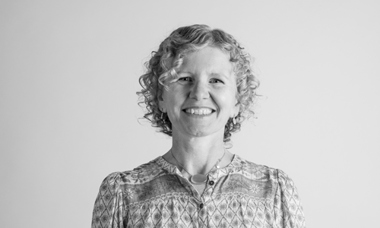
Beth Armstrong
Read moreBeth Armstrong

Raurenga (2021)
Tell us a bit about yourself
I was born in Scotland and lived remotely for many years including the Shetland Islands and later the Isle of Rhum. Growing up on the islands, where my father worked in Conservation, provided lots of opportunities to get up close to nature whether it was watching otters and seals playing on the rocks in front of our house or being present to witness a White-Tailed Sea Eagle take its first flight. I emigrated to NZ in 2005 with my Kiwi husband. We have two daughters and for many years I have been the primary caregiver.
How are you inspired in your art practice by the surrounding environment of Taranaki, where you live?
We are surrounded by stunning parks and gardens in Taranaki, such as Pukekura Park and Pukeiti Gardens where it’s possible to see a vast number of our beautiful native trees and ferns. Nothing is more humbling than gazing up into the canopy of an ancient tree such as the magnificent 2000 year-old Pūriri in Pukekura Park. This sense of awe and wonder of our environment had a profound effect on me and led to my first series of native fern designs which I have had printed on textiles and wallpaper.
What would you like visitors to the exhibition to understand or sense from looking at your artwork?
I feel deeply connected to nature and am drawn to its beauty. As humans, we often forget how uplifting it can feel to spend time walking through a park or sitting in a garden. Just like us, our natural world is impermanent, fleeting, fragile and incredibly unique. Through my designs, I aim to capture this beautiful delicate side of nature and demonstrate how our natural world can create incredibly uplifting and beautiful interiors whilst also reminding us of the need to protect it.
Where do we go to find out more about you?
www.instagram.com/betharmstrongdesign/
How did you get started as an artist?
I needed a break one weekend when my kids were much younger so my husband took the kids away and I found solace with a pencil and sketchbook! Re-discovering the joy in being creative again and how healing this was for me at the time, I decided to continue exploring and embarked on a course in Art & Creativity. That was in 2017 and since then I have continued to follow my curiosity which has led to further studies in botanical illustration, watercolour and surface pattern design.
What advice would you give to a young, aspiring artist?
Follow your curiosity! I think out of all the advice and guidance I have had over the last six years, focusing on what brings you joy in your art practice has to be the best compass to use and this will show in your work. Keep working at your craft and know it will take time to create work you are truly proud of, all the best things in life take time.
What is the most challenging part about working with your chosen media/medium for this artwork?
Working with watercolour can be very unforgiving and if you make a mistake, you can’t undo like you can on a computer or graphics tablet. For the purpose of creating wallpaper it can be hard to scale-up a hand painted design that has been scanned into the computer due to the fact it’s made up of thousands of pixels (unlike vectors) so the larger the scale is increased, the more pixelated it becomes. It’s always important to envisage the final scale it will be printed at when painting your original motifs. As you can see for this design, the original watercolours are a very similar size to the repeating pattern which avoids this problem.
What are your tools of choice?
I love to use Windsor & Newton Professional Watercolour due to the quality of the pigment and the fact that you don’t need to use much! I also love to use smooth Hot Press 300gsm Watercolour paper which allows the paint more time to move around on the paper rather than cold press watercolour paper which is more absorbent. I also use Photoshop to create my final repeating designs.
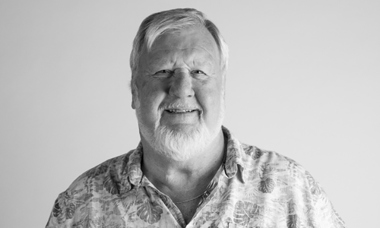
Ian Axtell
Read moreIan Axtell

Gardens of the Mountain (2023)
Tell us a bit about yourself
Born in England I emigrated to New Zealand in 1973, becoming a Kiwi in 1976.
After graduating with a BA in 1988 I went on to be a potter/pottery teacher creating functional ware, sculptures and whimsy figures. This continued until the early 2000s when, having always harboured a desire to be an artist, I finally began to follow the dream and began my journey of painting every day. In 2008 I achieved a post-graduate Diploma in Fine Arts.
How are you inspired in your art practice by the surrounding environment of Taranaki, where you live?
As an artist in Auckland my work, always eclectic, had evolved from impressionist to a series of abstract landscape and cityscapes. Moving to Taranaki in 2011, I found a new energy and enthusiasm. My somewhat oscillating approach to painting somehow made sense in this rugged and constantly changing landscape dominated by Taranaki Maunga. Abstract experimentation quickly became the main thrust of my practice. I find endless inspiration in the changing colours and textures that surround us.
What would you like visitors to the exhibition to understand or sense from looking at your artwork?
Applying multiple layers of acrylic paint of varying viscosity with brushes and many hand-made tools, to either wet or dry surfaces creates varied effects. I hope that the impact of this, sometimes unpredictable process conveys a sense of depth and complexity to the work, engaging the viewer in a search for their own interpretation, enjoyment and critique of the content which includes some essence of the colours and shapes of the flora and fauna of our environment.
Where do we go to find out more about you?
www.facebook.com/ian.axtell.3
www.mobileart.co.nz
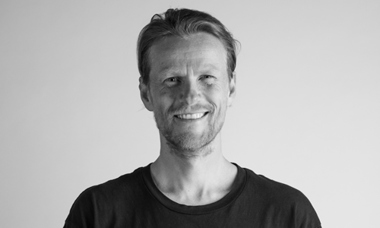
Jordan Barnes
Read moreJordan Barnes

IOU for Dad (The Prodigal Son) (2021)
Tell us a bit about yourself
Born and raised in New Plymouth. I grew up surfing the coastline of Taranaki with my family and friends. I have spent time travelling and painting in many places around the world, but always find the right work/life balance back home in Taranaki. Full time artist, recently married to a local girl, we built a house in 2022 and we have a little Italian greyhound named Mo.
How are you inspired in your art practice by the surrounding environment of Taranaki, where you live?
The ocean makes me feel alive. It frees up my mind to ponder the next creative pursuit.
What would you like visitors to the exhibition to understand or sense from looking at your artwork?
As an artist, my ultimate pursuit is a deeper understanding of the human condition, aiming to unearth fresh perspectives about myself and others. Often, my work explores the figure or portrait in response to a carefully chosen environment. Through meticulous rendering and hyper-realistic details, I strive to captivate the viewer’s attention. Yet, my true objective lies in delving beneath the surface, endeavouring to expose a profound psychological narrative.
Where do we go to find out more about you?
www.jordanbarnesartist.com
www.instagram.com/jordanbarnesartist/
www.facebook.com/jordanbarnesartist
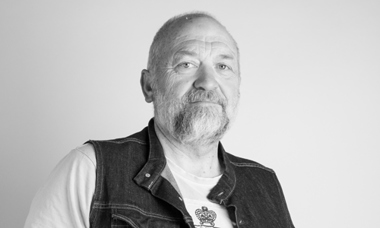
Mark Bellringer
Read moreMark Bellringer

Upper Ihaia (2023)
Tell us a bit about yourself
I live in Eltham, was bought up in back country Taranaki on a sheep farm in Tarata and the Taranaki landscape has inspired me ever since.
How are you inspired in your art practice by the surrounding environment of Taranaki, where you live?
Documenting the landscape makes up a large part of my personal work. I like to find interesting points of view in the “ordinary everyday that surrounds us”.
Paintings in the last 12 months are based mostly from my travels around the back roads of Taranaki on my Royal Enfield. They are painted Plein Air (on location), or in my studio in the manager’s office of the old BNZ Bank in Eltham from various references and memories.
What would you like visitors to the exhibition to understand or sense from looking at your artwork?
That the simple landscape that surrounds us provides endless possibilities to create.
Where do we go to find out more about you?
www.markbellringer.co.nz
www.instagram.com/markbellringer/
How did you get started as an artist?
I found I had a little talent and started painting around 11 or 12.
What advice would you give to a young, aspiring artist?
Don’t give up, follow your heart and don’t take any notice of the “art establishment”.
What is the most challenging part about working with your chosen media/medium for this artwork?
They are painted "Alla Prima" - wet-on-wet, and in direct painting style, a method of painting in which artists apply paint to the canvas essentially in one sitting. The source material is endless and I am continuing to document the landscape around me. I have also produced a number of commissions over the last couple of years.
What are your tools of choice?
I work with oils on canvas mostly, however I am also a photographer and am known for my Taranaki landscape photographs as well.
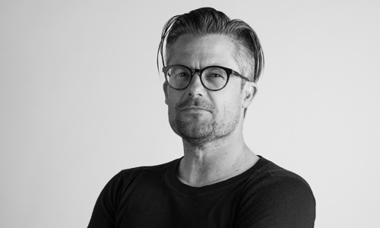
Ross Bennett
Read moreRoss Bennett

Old Zealand (2022)
Tell us a bit about yourself
Growing up in Nelson I was surrounded by art. I've spent 28 years in the design industry, first as a commercial illustrator, then as a designer where I worked with NZ's famous school journals, and later as a brand and marketing consultant for businesses of all sizes. My art was a way to create outside of a corporate brief and so the garage became a studio/gallery and this allowed me to explore art more freely - without ruining the carpet.
How are you inspired in your art practice by the surrounding environment of Taranaki, where you live?
I find the Taranaki landscape incredibly textural, in my print work you'll find directional lines and curves of the sea contrasting with topographic lines of the landscapes and cliffs that border our ocean. That West Coast ruggedness reveals itself in my painting where I'll mix black sand into my acrylics and use rough brush work to bring out a dark and textural finish to my landscapes.
What would you like visitors to the exhibition to understand or sense from looking at your artwork?
Old Zealand looks back to a moment where an ancient land meets its first inhabitants, as witnessed by the curious Tūī. The landscape is a fantasy of prehistoric volcanoes and islands invoking a sense of the untouched nation that the arriving waka may have encountered. The patterns carved into the Tūī give it a sense of form and texture in the absence of colour.
If I really wanted to annoy historians I would've chucked a dinosaur in there too.
Where do we go to find out more about you?
wwwwww.rossbennettart.com
www.instagram.com/rossmbennett/
www.facebook.com/RossBennettArtist
How did you get started as an artist?
I've worked commercially as an artist but my most enjoyable work is created without the constraints of a brief. As a kid my older brother and I were always drawing but he drew on the walls and so my talents weren't crushed into oblivion by behavioural expectation like his.
What advice would you give to a young, aspiring artist?
Not every piece is a masterpiece, one piece of art draws from another, the more you make, the more they inform the next until suddenly you find you have developed your own visual language to use and once that's done, then nobody's negative opinion of your work matters, because the reality is that you can't compare something that is unique.
What is the most challenging part about working with your chosen media/medium for this artwork?
Mostly that I'm not very patient when it comes to the printing process. The treatment of inks, the dampness of your paper, the temperature, the press pressure all combine to either make your day or poop on your parade.
What are your tools of choice?
Wood is great for large scale works, yet my preference is rubber as it is softer to cut and more flexible than lino which can go brittle and break over time. I'm currently working with water-based inks for ease of wash up but some small experiments with oil based inks have given me richer results. Wine helps.
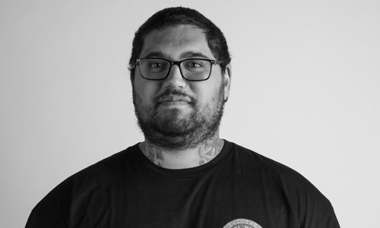
Jordan Berry
Read moreJordan Berry

Te Tīmatanga o Hūmārire (2023)
Tell us a bit about yourself
Ko Aotea te waka, ko Waingongoro te awa, ko Taranaki te maunga, ko Ngāruahine rātou ko Ngāti Ruanui, ko Te Ātiawa, ko Tapuika ōku iwi. Ko Jordan Berry ahau.
I am 30 years old and I am an Engineer. For the past 3 years I have been studying and practising Whakairo – Maori wood carving.
How are you inspired in your art practice by the surrounding environment of Taranaki, where you live?
When I was young, a fully carved wharenui was built and opened within my iwi and hapū at Aotearoa, in Ōkaiawa. I was very young and impressionable. And the carvings within this wharenui were stunning and have always lingered in the back of my mind. Fast forward 20 odds years I was given the opportunity to learn whakairo. I hope to use this newly learnt skill to spread and improve our traditional art practise all over Taranaki.
What would you like visitors to the exhibition to understand or sense from looking at your artwork?
This taonga is called "Te Tīmatanga o Hūmārire" which translates to humble beginnings, this taonga was my first poupou carved by myself while learning whakairo. He is a kaitiaki (guardian) of whatever space he occupies, he represents protection and guardianship.
Where do we go to find out more about you?
lnstagram - Jordanberry414
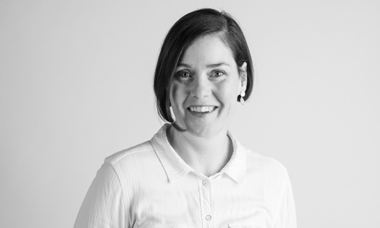
Philippa Berry-Smith
Read morePhilippa Berry-Smith

Through Time to Her (2023)
Tell us a bit about yourself
Born in New Plymouth, Philippa earned a Bachelor of Visual Art majoring in Graphic Design before her career in the creative sector. This included working as both an in-house and freelance designer, and since 2010 as a Creative Arts Tutor at WITT Te Pūkenga.
How are you inspired in your art practice by the surrounding environment of Taranaki, where you live?
My inspiration for this particular piece comes not so much from the physical environment of Taranaki (although that affects me deeply) but rather from the people who live here now, and in the past. I'm interested in how my ancestors ended up in Taranaki, what brought them here. Taranaki is a fixed point in space around which my family rotates. The chance to travel back in time and peek into their lives is an exciting aspect for me.
What would you like visitors to the exhibition to understand or sense from looking at your artwork?
That we are all much more connected to those around us that we might suspect. I would like people to experience for themselves the thrill of finding a connection to a distant ancestor.
Where do we go to find out more about you?
www.filamentdesign.co.nz
www.instagram.com/filamentdesignnz/
How did you get started as an artist?
My family is full of creative people: craftspeople, engineers, artists, and designers. Some of my earliest memories are of playing with colour and paint.
What advice would you give to a young, aspiring artist?
Try out as many different media as you can, even the ones that appear challenging. Watch for interesting things to happen, and remain curious in your practice. Aim to explore topics that you engage deeply with, as they will hold your attention well.
What is the most challenging part about working with your chosen media/medium for this artwork?
There are three very distinct sections to the build of this work: the research (which can take years to piece together), the visual design, encoding, and construction of the image, and lastly the animation and audio elements. The most challenging aspect is visualising the appropriate shape that will allow me to show all the data points I need to include. The data can be slippery and doesn't always like to be pinned down to a static shape.
What are your tools of choice?
Pencil and paper, Adobe Illustrator, Adobe Premiere, genealogical research software.
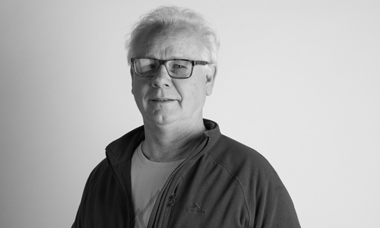
Kevin Betteridge
Read moreKevin Betteridge

Native New Zealand Kohekohe (2023)
Tell us a bit about yourself
I am Taranaki born and raised and I love our unique region. I left school and wanted to use my apparent artistic ability for some sort of career. Unfortunately there weren't too many jobs around in Taranaki 45 years ago that utilised artistic ability so I got a job at Taranaki Newspapers. I had two uncles there and there was an aspect of design, even back then.
From there I went on to Commercial Print factories, which involved a lot more design but it truly wasn’t my thing. Only in the last 15 years or so that I have launched into painting as a job.
How are you inspired in your art practice by the surrounding environment of Taranaki, where you live?
As an artist, I need to be inspired by my surroundings in order to paint. Taranaki is one of those unique regions that has unlimited inspiration, from our iconic Mt Taranaki to our rugged coastline. I need to see something that captures my attention. I don’t paint from my imagination; I know that I don’t possess that gift, so I stick to what I’m good at - capturing a great shot with my camera and then painting it in oils.
What would you like visitors to the exhibition to understand or sense from looking at your artwork?
I think I would like visitors to appreciate the grandeur and character of this rugged old tree. I noticed this tree several years before I painted it. I knew where it was, so when the time was right I went back to find it. Thankfully it was still standing!
I love to paint in black and white, when the photo lends itself to it, and this particular tree just had to be painted in black'n'white to show it off in all its grandeur.
Where do we go to find out more about you?
My website is www.kevinbetteridgeart.com
www.facebook.com/p/Kevin-Betteridge-Art
www.instagram.com/kevinbetteridge
How did you get started as an artist?
I tried painting in oils 40 odd years ago, and though part of it looked great, other parts weren't so great at all. I thought I couldn’t paint up to my high expectations, so I gave it away for 40 years. Being inspired by other artists certainly brought the desire back, so I washed cars in my lunchtimes to help pay for the paints in order to get give it another shot. I took a few photos, bought all the equipment and very nervously gave it another go. I was freaking out that it wouldn’t turn out great and my hopes would again be dashed, but it turned out fairly well and it actually sold!
What advice would you give to a young, aspiring artist?
Definitely don’t expect your first attempt to be brilliant. It takes time, skill and definitely using the right brush for what you are painting makes a huge difference. Settle on a style that you love. Don’t try and paint exactly like someone else. You have a unique style that you enjoy. Make sure it is enjoyable to your eye. Don't worry what others might think; if it looks brilliant to you, others will probably think the same thing. Play around and settle on a medium that suits your style. Find something that inspires you to paint and give it a go!
What is the most challenging part about working with your chosen media/medium for this artwork?
I think painting in layers has definitely been a challenge. I don’t normally do a lot of layers on my paintings. I'd prefer to paint wet on wet if at all possible. There are some things that just have to be painted over the first layer once it has dried. Finding the right medium that allows you to do that is a skill in itself.
What are your tools of choice?
I paint primarily with brushes. I can't say that I've ever used a pallet knife to paint with. I have a style that is more realism than abstract.
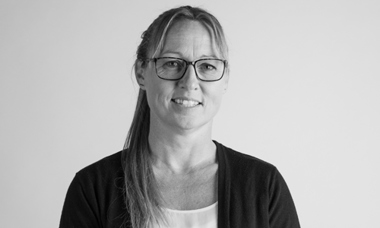
Laura Buchanan
Read moreLaura Buchanan

Taniwha (2023)
Tell us a bit about yourself
I am originally from Auckland, but have lived in coastal towns, Muriwai Beach, Tairua, Raglan, Gisborne and now Waiinu Beach, in South Taranaki. Growing up, I spent my holiday at Langs Beach in Northland. My siblings and I were allowed to roam the native bush that the property backed onto. There we found old glass bottles, thrown off banks years ago. We found cow bones that we carted back to show our parents. We built huts out of punga logs and set lines to catch eels. Hours were spent in that bush. We got lost and found our way.
- The valley has now been taken over by concrete paths and new builds –
How are you inspired in your art practice by the surrounding environment of Taranaki, where you live?
The ever-eroding cliffs of Waiinu Beach offer treasures to be found while beach combing. I love the textures and the colours. The earthy finds inspire my work as do the surrounding flax bushes, black sand and ocean waves. Often, seams of clay can be seen in the cliffs of Taranaki. We call this 'wild clay' and it too inspires me to create with clay.
- My uku –
What would you like visitors to the exhibition to understand or sense from looking at your artwork?
Ngā taonga tuku iho – te tuna; The eel – An ancient gift from the gods.
Why then do we take such pleasure in its death? Thinking back to my childhood adventures, exploring the bush with my siblings. We anxiously tied lengths of nylon line to exposed roots – baited the hook with bacon and dangled it above deep dark crevasse in the clay bank. Overnight the line sat, waiting for an eel to take a bite. I regret these unruly acts of juvenile rebellion. Instead take shame for the act.
These precious taonga wairua were mere taniwha of the awa, guardians, lurking in their watery dens.
Where do we go to find out more about you?
www.facebook.com/lulustudiopotterynz/
How did you get started as an artist?
I started creating with clay while at home with my young daughters. I'd spend my evenings creating maternal sculptures. Expressing the emotions which consumed me. Without access to a kiln, I would then make molds from these figures, which I would then cast with concrete. They now hide beneath a pōhutukawa tree, covered in moss and lichen.
What advice would you give to a young, aspiring artist?
Just get some clay and start creating. You don't need classes or a studio with all the fancy equipment. Your hands are all you need. Just get started. Find a local club to join or another fellow artist who is happy to share kiln use.
What is the most challenging part about working with your chosen media/medium for this artwork?
The firing process is the most difficult part. You should not have a set result in mind as often it is up to the 'kiln gods'.
What are your tools of choice?
Most of my work is hand-sculptured, however I have used an extruder to create the initial form of my tuna.
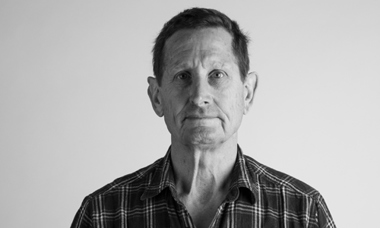
Donald Buglass
Read moreDonald Buglass

Box (2023)
Tell us a bit about yourself
Hokitika is my tūrangawaewae but Ngāmotu has been my home for 5 years.
I am a multi-disciplinary artist who's worked in Europe, Asia and New Zealand for about 2 decades. I graduated as a painter from the National Art School of Australia, Sydney, in 1991 followed by Furniture Design in Tasmania but now specialise in sculpture and multiple media formats. I have reduced my art output since Covid and its travel restrictions but I'm slowly picking up steam again.
How are you inspired in your art practice by the surrounding environment of Taranaki, where you live?
Like many places I've lived, Taranaki provides a kaleidoscope of history and social narratives to feed my curiosity.
What would you like visitors to the exhibition to understand or sense from looking at your artwork?
Hopefully "Box" triggers the viewers' imagination and curiosity. It works on several levels and is open to interpretation. For me it’s a play on words (box was a metaphor for a vagina when I was in primary school - we were fiendishly inappropriate back then). The broom references stereotypical roles. There is much more here to ponder and lots to be found in closets.
Where do we go to find out more about you?
My website is kaput at the moment. Some work can be found on FB:
www.facebook.com/buglassart/photos_albums
How did you get started as an artist?
I had difficulty writing and communicating effectively from an early age and found art was a way to express myself.
What advice would you give to a young, aspiring artist?
Draw, paint, sculpt; repeat.
What is the most challenging part about working with your chosen media/medium for this artwork?
Having the courage to go with my gut feeling.
What are your tools of choice?
Pencil, paint bush, chainsaw, chisel, grinder.
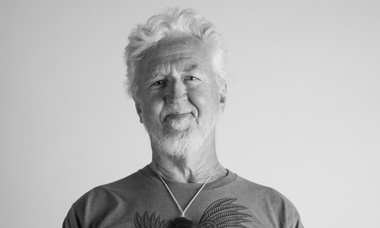
Marcus Campbell
Read moreMarcus Campbell

Albatross (2023)
Tell us a bit about yourself
I have been working stone since 2021 and the Te Kupenga stone carving society up at Paritutu has been where most of my work is done. I have lived in Taranaki for around 35 years originally hailing from Kawerau in the Bay of Plenty. I have always been a practical person so working with my hands has been my forte for most of my life which made the transition to stone carving a lot easier.
How are you inspired in your art practice by the surrounding environment of Taranaki, where you live?
This Albatross sculpture was inspired by the raw boulder it was carved from - the rock had been sitting on my deck for some time and then one day it just clicked, I grabbed a piece of chalk and roughly sketched it out and the result is now before you.
What would you like visitors to the exhibition to understand or sense from looking at your artwork?
I think this interpretation of our pelagic friend is fairly easy to recognise.
Where do we go to find out more about you?
I have not established a web presence yet but I will soon. I do have a Facebook page but it is not specific to my stone carving.
How did you get started as an artist?
I have always been a creative but chose to chase conventional employment unfortunately.
What advice would you give to a young, aspiring artist?
Give it a go and utilise the many grants available to artists.
What is the most challenging part about working with your chosen media/medium for this artwork?
Time and dust.
What are your tools of choice?
Diamonds and silicon carbide sticks.

Hugh James Cargill
Read moreHugh James Cargill

Seed Vessel (2023)
Tell us a bit about yourself
I grew up in New Plymouth, the eldest of three boys. I greatly appreciate growing up in Taranaki during that time and the freedoms and opportunities it provided. Leaving to go to university, I studied to become a geologist. Geology gave me the opportunity to work and travel overseas and helps inform how I view the natural world. I live in the countryside with my amazing partner Sally, where we are custodians of the beautiful landscape which is our home.
How are you inspired in your art practice by the surrounding environment of Taranaki, where you live?
The Taranaki landscape directly influences my art practice. The andesite I work with is literally part of the landscape. Working mainly outside I am surrounded by birds and native trees and have a direct view of Taranaki Maunga (weather permitting). Creativity for me is something of an immersive experience and I find the surrounding environment of our home both stimulating and inspiring.
What would you like visitors to the exhibition to understand or sense from looking at your artwork?
I am hoping visitors will be curious to know a little more about our unique native trees and get a sense of their capacity for regeneration and their potential to heal the land. I hope visitors will also gain a greater appreciation for the variety, strength and natural beauty of Taranaki andesite and its potential as a sculptural medium.
How did you get started as an artist?
I started working with stone many years ago, initially small objects using very basic hand tools. The desire to work at a larger scale led to becoming a member of Te Kupenga Stone Sculpture Society. I have participated in five symposia on the foreshore. I am continually learning and improving my craft and working with stone remains my passion.
What advice would you give to a young, aspiring artist?
I think curiosity and experimentation are useful additions to the other skills and techniques needed in any creative practice. Try to be discerning about any advice you might receive and learn to trust and hone your instincts and personal vision.
What is the most challenging part about working with your chosen media/medium for this artwork?
Taranaki andesite is a hard, tough stone that needs physical effort to shape it. It is often very noisy and very dirty work. The unique qualities of each stone are generally only revealed during working, there are often surprises, requiring an adaptive, flexible approach. These challenges and surprises are part of what makes andesite so satisfying to work with.
What are your tools of choice?
Like most stone workers I have lots of tools. Diamonds are a stone sculptor’s best friend and I have many diamond tools for cutting, grinding and polishing. I have an array of dressing stones for hand shaping and smoothing and find the process of working stone-on-stone very satisfying. I am also very fond of my handmade stone-splitting tools.

Brian Clark
Read moreBrian Clark

Synthetic Strato (2023)
Tell us a bit about yourself
My introduction to art was during my youth while growing up in Southern California shaping and airbrushing surfboards. As a surfer, my art was rooted in Southern California's surf culture and now since 1999 I have continued making surfboards and creating original works of art in New Zealand. My completion of a Bachelor of Visual Arts in 2004 from Northland Polytech has broadened my insight of thoughtful pieces that reflect the environment and social issues that form our world today.
How are you inspired in your art practice by the surrounding environment of Taranaki, where you live?
Living and surfing in Taranaki for the last 16 years, there is one constant that follows me wherever I go and that's Taranaki Maunga. Like the surf, Taranaki Maunga is never stagnant and constantly changing. Every day, and every location has its own aura. It's a beautiful and inspirational connection with the natural environment of land and sea. We're very lucky to live in such a place.
What would you like visitors to the exhibition to understand or sense from looking at your artwork?
This is up-cycled waste from the run off of excess resin after laminating surfboards. It’s normally broken up into small pieces and sent to the landfill. Each colour represents one surfboard. After 30-40 surfboards it becomes 25-35mm thick. I've been manufacturing surfboards for 47 years. Sadly, these are the first pieces I've re-purposed as art. Everything can have a second life... zero waste is achievable.
How did you get started as an artist?
Learning to shape and airbrush surfboards in 1976, which led to a formal education starting with drawing, ceramics, jewellery and graphic design.
What advice would you give to a young, aspiring artist?
Art is everywhere and is everything.
What is the most challenging part about working with your chosen media/medium for this artwork?
As with making surfboards and the related art from the waste products, it is important to protect yourself from the fumes and dust.
What are your tools of choice?
For resin-works it's grinders, sandpaper and clear acrylic lacquer.
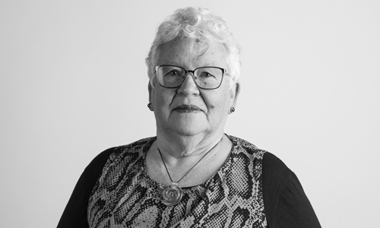
Barbara Clegg
Read moreBarbara Clegg

It’s All About Our Rivers (2023)
Tell us a bit about yourself
I am a mother, a grandmother, and a great-grandmother who creates images.
My creativity used to be sewing, knitting and gardening but these have now been relegated to chores because painting trumps them all!
As a now single retiree, my time is my mine. So being an artist at any hour of the day is possible because there is no one telling me not to.
How are you inspired in your art practice by the surrounding environment of Taranaki, where you live?
From my home on the coast I can see waves in one direction and our majestic mountain in the other. The cloud formations inspire me and the sunsets are large, vibrant and uncluttered. Beyond these immediate inspirations, I enjoy researching other views using books, postcards and images provided by those who want a particular aspect.
What would you like visitors to the exhibition to understand or sense from looking at your artwork?
My joy at being an artist, of living in Taranaki, and of having such a richness of opportunity to find a view that halts my heart and makes me reach for camera and then my paints and brushes.
Specifically, I would like them to sense movement where I have painted water, grandeur when I have painted the rural landforms that surround me and to appreciate that artists have the same creative license as poets. We can, literally, move mountains!
Where do we go to find out more about you?
I have a presence on Facebook: www.facebook.com/p/Barbara-Clegg-Artist
I am a supporter of Taranaki Art Awards (Ōpunakē).
I used to have a website but maintaining it used up precious painting time.
Now word of mouth and business card drops keep me as busy as I chose to be.
What advice would you give to a young, aspiring artist?
Be determined! Your image does not have to be representative, just recognisable.
The sky does not have to be blue or the grass necessarily green. Express yourself!
What are your tools of choice?
Life is a lot easier if you have a good adjustable easel. Buy the best you can afford especially if you see big images on your artistic horizon.
Brushes – basic range of sizes but not necessarily expensive. Lots can be achieved with regular house painting range.
Stretched canvases – buy them commercially produced as it allows for more painting time.
Paints – once I got past my dithering early stages, I’ve chosen one range of acrylic paints and stayed with them.
Drawing grid - as a non-drawer I find this tool particularly helpful if I’m forging (copying) another artist’s work as a learning experience.
Camera – just your mobile phone. Nothing grander.
A place to paint is as important as all the above. My studio is an antique tea wagon which carries my paints, brushes, water etc. and my easel, also on wheels, can take me throughout my house.
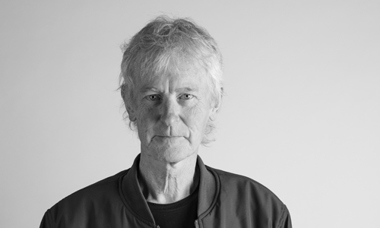
Andrew Davie
Read moreAndrew Davie

Taranaki Maunga: A Summit Meeting (2023)
Tell us a bit about yourself
I grew up in New Plymouth and then moved overseas. Returned to New Plymouth a few years ago.
How are you inspired in your art practice by the surrounding environment of Taranaki, where you live?
Maybe not so much directly inspired by the environment. But I appreciate how fortunate we all are to live here.
What would you like visitors to the exhibition to understand or sense from looking at your artwork?
Anything at all.
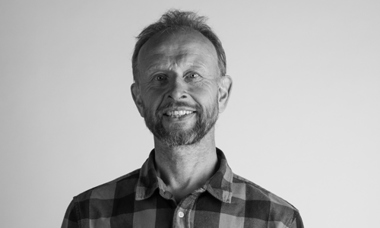
Arno de Vaan
Read moreArno de Vaan

Triangled (2023)
Tell us a bit about yourself
I was born and bred in the Netherlands and immigrated to New Zealand in 1996 with my wife and son. We had two more kids in New Zealand and have lived most of our time in rural Taranaki.
My background is in mechanical engineering, however once immigrating to New Zealand I've worked in dairy farming. We worked our way up to owning our own farm, sold it shortly after, and moved to a lifestyle block in Ratapiko where I now provide the community with engineering, building and agriculture services.
How are you inspired in your art practice by the surrounding environment of Taranaki, where you live?
Mt Taranaki has always been fascinating to me. I have spent many hours hiking it, including about ten summit climbs. Mt Taranaki and its surrounding lands provides me with my medium of art - andesite stone carving - and has also acted as an inspiration to some of my works.
What would you like visitors to the exhibition to understand or sense from looking at your artwork?
How amazing it is that the multiple eruptions of Mt Taranaki, hundreds of years ago, has resulted in the formation of rocks which now provide us with an amazing carving medium of andesite stone.
Where do we go to find out more about you?
How did you get started as an artist?
I had never done any art till I accompanied my wife - a lifelong artist - to the Taranaki Arts Trail many years ago. She had cunningly selected to visit some local stone carvers which sparked my interest for this art form. Shortly afterwards I joined the Te Kupenga Stonecarvers and started my journey as an artist.
What advice would you give to a young, aspiring artist?
Whatever art-form you choose, focus more on enjoying the process rather than focusing too hard on the end-result. Set yourself challenges and try new things. If you think stone carving could be for you, come over to Te Kupenga Stonecarving and we will gladly provide you with an opportunity to try it out!
What is the most challenging part about working with your chosen media/medium for this artwork?
Andesite stone is a natural product which can have unexpected cracks and impurities. This adds a dynamic aspect when carving the stone as you need to constantly adjust your planning and structure to adapt to the stone.
Removing stone is also a slow process, especially in hard-to-reach corners, like my piece "Triangled".
What are your tools of choice?
My tools of choice are grinders equipped with diamond cutting and grinding disks. There are a lot of diamond tools available with many different applications to suit your needs.

Dimphy de Vaan
Read moreDimphy de Vaan

Flowing Freedom (2023)
Tell us a bit about yourself
I grew up in the Netherlands and moved to Aotearoa 27 years ago.
As long as I can remember I've had the urge to create. I also enjoy facilitating workshops and supporting others to find their creative voice. I’m always interested in exploring, testing, and learning more about my creative practices. This includes, but is not limited to, printmaking, paint, mixed media, pottery and stone carving. To me, art is more about the process than the product. A creative outlet that is challenging, satisfying, and enriching my life.
How are you inspired in your art practice by the surrounding environment of Taranaki, where you live?
We are spoiled by the place we live! When we look out of the window of our living room, Taranaki Maunga is right there greeting us. Showing us beautiful changes over the hours, days, seasons and years. I enjoy looking at the variety of shapes and lines, the shadows cast by these, the surrounding whenua and the clouds surrounding te maunga. As you make your way around the mountain, the landscape changes continually, every time you turn a corner, there’s new inspiration to ponder.
What would you like visitors to the exhibition to understand or sense from looking at your artwork?
The tall sculpture has a free-flowing curved shape with a variety of texture and some hard lines. It is accentuated by glaze.
As with Taranaki Maunga, the light it catches and shadows it casts can dynamically change based on the light source and the angle you look at it.
The sculpture is reminiscent of the natural landscape of Taranaki, inspired by Papatūānuku.
Where do we go to find out more about you?
www.dimphydevaan.com
www.facebook.com/DimphyDV
www.instagram.com/dimphydevaan/
email@dimphydevaan.com
How did you get started as an artist?
I don’t know if any line has to be crossed to call yourself an artist. I started painting from a very young age. With the encouragement of my parents, I ventured out in other mediums and have never stopped playing.
I continue to get excited when I start to create. Captivated in the moment I forget about time and place.
What advice would you give to a young, aspiring artist?
Create for YOURSELF and not according to what other people want or like.
Creating for the anticipations of others can stump and overthrow your creative flow.
Play with materials that intrigue you. Explore different media, give things a go. Don't worry about the end product, enjoy the doing, the exploring, testing, learning, improving.
What is the most challenging part about working with your chosen media/medium for this artwork?
- Hoping the clay sculpture survives and is strong enough to hold its own weight while building it up in an organic shape; clay is heavy when it is wet!
- After drying, moving it from home to the kiln, fingers crossed that it survives the trip.
- The sculpture does not exist until it comes out as one piece after bisque and glaze firing!
What are your tools of choice?
My hands are the best tools for this mahi. And some pottery tools on the side.
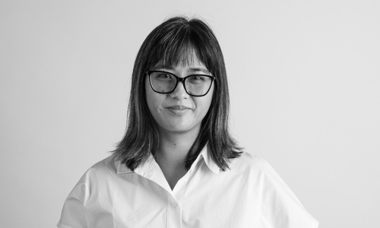
Krismarlianti Donaldson
Read moreKrismarlianti Donaldson

Take Me There! (2023)
Tell us a bit about yourself
I am an Indonesian artist and author who moved to Manaia in March 2021. I grew up in a multicultural environment which led me to a unique perspective about life and human emotions. The raw life stories that I experienced when I lived in Indonesia had a strong influence on my art process. In 2022, I achieved recognition from Taranaki National Art Award as the first winner. Recently, I have been a volunteer at Lysaght Watt Gallery Hāwera as a gallery sitter and committee member.
How are you inspired in your art practice by the surrounding environment of Taranaki, where you live?
I have always been fascinated by colours. New Zealand, especially the Taranaki environment enriches my colour sense, and the peaceful environment changed my perspective on life, nature, the universe, and myself. I used to live in a big city with a fast-paced dynamic, competitive, chaotic, and buzzing. On the contrary, Manaia offered me a laidback and contemplative lifestyle. New Zealand stimulates my new perspective about myself, nature, and life.
What would you like visitors to the exhibition to understand or sense from looking at your artwork?
My artworks are rich with the deepness of colours and spontaneous lines. They express my truest emotions. I hope the viewers of my artworks can feel the impulse to be honest with their feelings and emotions. It doesn't matter what the feelings are. Hopefully, the output of emotion can make us see inside ourselves and stimulate our consciousness about being honest with our feelings.
Where do we go to find out more about you?
www.tantrum-artstudio.com
www.instagram.com/krismarlianti/
How did you get started as an artist?
I joined the theatre club when I was in university. It opened my mind about humans and emotions extensively. I also researched the meaning of life by Viktor Frankl and emotional intelligence for my formal education. Since then, my interest has been more intense in emotions, life, and the universe. After I published my second book, I realized that I needed more than words to express my feelings. I need something more spontaneous, energetic, and colourful.
What advice would you give to a young, aspiring artist?
Being an artist is a brave decision. Yet challenging. It challenges us to be more passionate, insightful, and patient, and learn to see things from a unique perspective. Creating art is a process of internal growth and we must love every single process, otherwise, we will be frustrated. Art is life and life is art, we learn about ourselves and life through art. Therefore, embracing and enjoying the process and being open-minded is important.
What is the most challenging part about working with your chosen media/medium for this artwork?
I use oil for my paintings. It needs hours to get dry. I must wait until the earlier layer is dry before I add another layer. I have to control my emotions and save them for later or I have to be spontaneous and change with the new strategy. Dealing with my emotions and ego is the biggest challenge for every artistic process.
What are your tools of choice?
I use brushes for this artwork. But most of the time, I let my fingers get dirty. I love to apply the oil directly from the tube or pallet with my fingers. I also use oil bars to create the lines or mix the colours on canvas.

Jacqueline Elley
Read moreJacqueline Elley

Diversions (2021)
Tell us a bit about yourself
I made Ngāmotu my home about 15 years ago. I grew up in Kirikiriroa (Hamilton) and being drawn to the sea, have lived and painted my way around many coastal areas of Aotearoa. I studied Fine Art in Ōtepoti (Dunedin) in the late 90's. I then spent many years as a Self Employed Artist, mostly painting, drawing and also developing the Light Art that I developed while at Art School.
How are you inspired in your art practice by the surrounding environment of Taranaki, where you live?
In recent years a core interest in my Art has been about care for the Environment, including the moana and many of the tiniest creatures that live in it. Taranaki has influenced my Art making in a different way to other places that I have lived. Much of my career has explored realist painting, and while I have have made paintings of the moana here, I have not painted Taranaki maunga. I am still coming to terms with my relationship to this whenua. "Diversions" is another step on that journey.
What would you like visitors to the exhibition to understand or sense from looking at your artwork?
My hope is to bring materiality to the viewers’ attention; why is this plastic tube being used in this way? I also welcome the fact that the viewer will bring their own sensations and responses to the work that may not be connected to my own thought processes.
Where do we go to find out more about you?
Instagram: @jacquielley Website: www.elley.co.nz
How did you get started as an artist?
I lived and worked in Hahei (Te Whanganui a Hei) during term breaks while studying which is also where I chose to live for a time when I finished Art School. I met many Artists in this community who were welcoming and supportive, and I felt very connected to the environment in which I lived. I had a strong desire to work hard at my art, that is where I started making and exhibiting.
What advice would you give to a young, aspiring artist?
Know yourself, trust yourself, believe in yourself. Forge your own path. Remain curious.
What is the most challenging part about working with your chosen media/medium for this artwork?
My chosen material was polyethylene tube that I set out to "upcycle" from the South Taranaki Regional Council. I was initially planning to weave it into various planktonic forms. Due to the high surface tension of this material, this was not possible so the only way to join it was to fuse it using heat. Heating polyethylene carries health risks! Be careful what, and how, you upcycle!
What are your tools of choice?
Charcoal, inks and oil paint.
A light source and any translucent material.
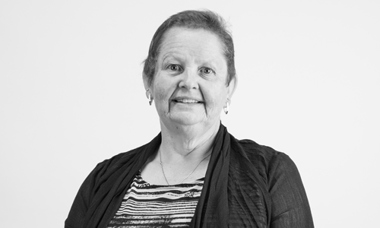
Lynda H
Read moreLynda H

Beauty a Bounty (2023)
Tell us a bit about yourself
I am Taranaki proud, born and bred and love the beauty & bounty of the natural environment that surrounds us. Our mountain is a part of me, a symbol of home, my roots, my foundation of life. I have been a potter for over 40 years and love creating. Commercially I have been full time at my craft since 2014.
How are you inspired in your art practice by the surrounding environment of Taranaki, where you live?
For me, art mimics life and nature. I work a lot with textures, love gardening and birdlife, so a lot of those influences are reflected in my work.
What would you like visitors to the exhibition to understand or sense from looking at your artwork?
Our mountain is the centre of our universe here in Taranaki. Whilst he stands majestically, he is also to be respected and preserved for the benefit of future generations.
Where do we go to find out more about you?
I have a Facebook page “LJH Pottery” but only sell to commercial clients, not to the public directly. However, each year I have a clean out of seconds & samples available for sale at my Hawera Studio where I run a charity event for ParaFed during the Taranaki Garden festivals. You will find my work locally at The White Sail Gallery and Percy’s Place in Stratford all year round.
How did you get started as an artist?
I was asked to make up numbers for community funded classes run by the Polytech and was instantly hooked!!
What advice would you give to a young, aspiring artist?
Creativity is a wonderful outlet. Soak up all the guidance and advice but forge your own path, style, and stick at it. All good things take time and practice.
What is the most challenging part about working with your chosen media/medium for this artwork?
The size of these pieces requires a special clay with grog to give it structural integrity. Making it is challenging due to its sheer size and fragility in its raw “unfired” state. I now make these directly on the kiln shelf so that it can be lifted when dry, on the shelf, directly into the kiln.
What are your tools of choice?
My hands are my tools and sometimes I need more of them!! Over the years I have collected many discarded items that suffice as tools – I like to recycle and repurpose so do not use many of the commercially available pottery tools. My favourite tool is an old broken propeller off a desk fan that moulds & shapes my sculptural pieces wonderfully!!
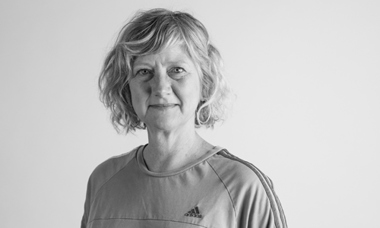
Jennifer Halli
Read moreJennifer Halli

Measuring to a Saint II (2023)
Tell us a bit about yourself
Born in Pittsburgh, Pennsylvania and raised in South Carolina; Colorado, Tennessee, Feilding, Wellington, Melbourne, Montana, North Carolina, New Jersey, Missouri, Massachusetts and Kāwhia were also homes before shifting to Ngāmotu in 2020.
Most of my training is in wood firing ceramics, I worked with world-renowned artists from the USA, UK and Australia and exhibited in Australia, Belgium, Denmark, Italy, Japan, Jersey, Taiwan, Aotearoa and the USA.
In 2019 I earned an MFA in Artisanry. I also run MIGHT COULD Art Project Space.
How are you inspired in your art practice by the surrounding environment of Taranaki, where you live?
My prints often contain a watery blue. This blue is the colour of where you can never go: the heights of the sky and the depths of the sea. Here in Taranaki, it feels clear and vivid and close. I have a view of the sea from my studio. I’m taken with how the bands of blues in the sea and horizon are ever-changing.
Taranaki has evoked a public facet; MIGHT COULD allows for totally experimental art projects.
What would you like visitors to the exhibition to understand or sense from looking at your artwork?
A belief in materiality is evident in my work. Using paper, ink, clay, sand, flocking, earth pigments and wick, I unwittingly merge ceramics and printmaking.
The hints of blue, striking and subtle, are a nod to Mary, the virgin mother all Catholic girls are encouraged to take on as a role model.
Blue is also of the horizon, of a place you can never go. For me, it is about my antipodean life split between the USA and Aotearoa New Zealand.
Where do we go to find out more about you?
www.jenniferhalli.com
www.instagram.com/jenniferhalli/
www.facebook.com/JenniferHalli
How did you get started as an artist?
The art room. I was comfortable here as a kid, always making or building. Later, I taught art until, in my late 30s, I started working as an apprentice & assistant to notable ceramicists. In my 40s, I decided to take it seriously and earned my MFA in Artisanry (Ceramics). During this time I found my way to the print studio and haven’t looked back.
What advice would you give to a young, aspiring artist?
Be selfish with your time. Pay attention to what energises and what depletes you.
Ask yourself “why” to find what is truly yours. Dig deep instead of wide.
It is often who you know; talk to people.
Open a gallery (in a garage, closet, anywhere) with other artists. A sense of urgency will keep you making, challenging and pushing limits.
What is the most challenging part about working with your chosen media/medium for this artwork?
My work is deceptively complex. Each finished piece is preceded by numerous iterations. Everything is considered - materials, layers, numbers, form. My studio is much like a science lab as I’m constantly testing materials for meaning and characteristics such as colour, texture and strength. I work slowly, allowing ideas to sink in, meanings to come clear and structure to take form.
What are your tools of choice?
It constantly changes - for this piece, a sketchbook, camera, brayer, printing press, and press mould.
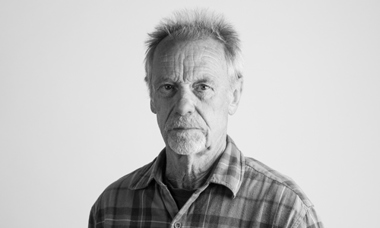
Allan (Waldo) Hartley
Read moreAllan (Waldo) Hartley

Fat City (2024)
Tell us a bit about yourself
I am an Earthling. A carbon-based life form with the capacity for abstract thought belonging to the one race, the human race and reside in the empty space between my atoms. Home of the ego and wherever egos, I go stumbling between the towering doors of birth and death.
How are you inspired in your art practice by the surrounding environment of Taranaki, where you live?
Taranaki has a rich landscape. I like the roads and bridges, farmlands, lahars, beaches and sea. I like to add a human element to the picture, a bit of drama, bit of humour and narrative in an ambiguous way that leaves things open to interpretation.
What would you like visitors to the exhibition to understand or sense from looking at your artwork?
Perplexity. Fat City is a term I heard long ago that denotes success. They made it. They succeeded. They have arrived. Now, which way to Easy Street?
Where do we go to find out more about you?
www.tart.co.nz
How did you get started as an artist?
Always used to draw pictures as long as I remember. Just a slow progression from there.
What advice would you give to a young, aspiring artist?
Master your craft. Nourish your imagination. Cultivate your vision.
What is the most challenging part about working with your chosen media/medium for this artwork?
Coming up with the innovative urban development. Lots of corrections, additions, changes. Where do you stop!?
What are your tools of choice?
Canvas, paint and brushes.
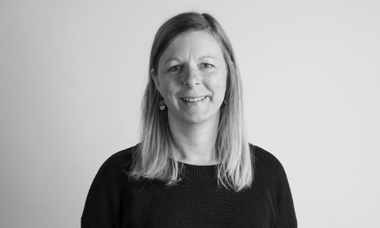
Reyna Henderson
Read moreReyna Henderson

The Half Empty Glass (2023)
Tell us a bit about yourself
I was born and grew up in Taranaki. I studied Product Development at Massey University and after some years working in the kitchen and retail interior design industries, I returned to New Plymouth where I now live with my husband and three children. The opportunity to focus on my paintings came about while being at home when my children were young. My passion is painting people, and my paintings are influenced by my day-to-day life and experiences here in Taranaki.
How are you inspired in your art practice by the surrounding environment of Taranaki, where you live?
Taranaki is where I live with my family, where I experience life as a mother, wife and daughter, and where I interact with people who inspire my paintings. The beaches and mountain are very important to me, as my family spends a lot of time surfing, swimming, biking and tramping. I always find time in these places uplifting, which is why the beach has played an important role in The Half Empty Glass painting.
What would you like visitors to the exhibition to understand or sense from looking at your artwork?
A feeling of understanding and a reminder of hope. Understanding that we are not the only ones who experience days when we feel flat, lack energy, and see the world only through a half-empty-glass view. And being reminded about how important it is in those times to surround ourselves with memories, words, people and places that make us feel uplifted and help us move forward into a better space.
Where do we go to find out more about you?
www.instagram.com/reyna_henderson/
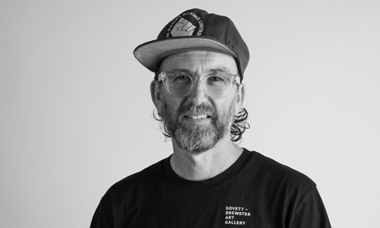
Murray Hewitt
Read moreMurray Hewitt

Hope is not feeling that everything will be alright. Hope is what gets you to feel a meaning, and to get up and fight for what you believe is right (2023)
Tell us a bit about yourself
I was born in Heretaunga, Te Matau-a-Māui. I am a first-generation New Zealander, my parents immigrated in the 1960s from England. I completed a Master’s degree in Fine Arts from Massey University, Wellington (2007). I also have a NZ Certificate in Civil Engineering and worked for many years as a youth worker. I have been an art installer for 15 years and currently work at the Govett Brewster/Len Lye Centre.
How are you inspired in your art practice by the surrounding environment of Taranaki, where you live?
I have found the history of Taranaki is very present. Taranaki iwi and the relationship with Waikato, the wars with the Crown, the oil and gas industry. So much that is still relevant now and the emotion is very close to the surface.
We moved from Whanganui-a-tara six years ago. My partner's family live here.
With the new government's attitude toward Tangata Whenua and the climate it makes it all the more important to talk about these things and Taranaki is a good place to do it.
What would you like visitors to the exhibition to understand or sense from looking at your artwork?
To be interested in knowing more about the past and its consequences in the present.
Where do we go to find out more about you?
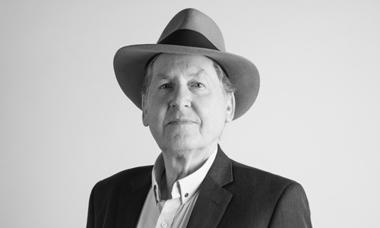
Alan John Hodgson
Read moreAlan John Hodgson

Taranaki Quadriptych (2022)
Tell us a bit about yourself
I hail from Paeroa in the Thames Valley, also of Ngāti Awa (Tūhoe) descent; and settled in Taranaki eight years ago. Most of my previous professional life was spent in the Waikato and Wellington. I am married to Joanne and we have three adult sons. The visual arts have been a passionate lifelong interest for me and I paint both abstract and figurative genres. The need to be expressive by creating visual art is an impulse for me.
How are you inspired in your art practice by the surrounding environment of Taranaki, where you live?
The mountain, the ocean, the rivers and the bush all attracted me to this part of New Zealand. Being a relatively isolated region gives it a unique character that I have found both fascinating and endlessly stimulating for an artist. This area is also well known for its celebration of, and support for, the arts.
What would you like visitors to the exhibition to understand or sense from looking at your artwork?
This quadriptych depicts the landscape of Taranaki, but more significantly the people that I have observed. The many dozens of small portraits have all been separately produced; and then collaged onto the canvases. I am interested in the psychology that permeates and makes up a society - including the dualities, especially the notion of 'demons and saints' and the quirks of humanity. Taranaki is depicted in this quadriptych as I have witnessed it; and as relative newcomer.
Where do we go to find out more about you?
https://www.koruondevon.co.nz/alan-hodgson-bio
How did you get started as an artist?
Being a shy introvert as a child, painting was a compelling avenue for expression.
What advice would you give to a young, aspiring artist?
Create art first and foremost for yourself – don't try to follow other artists.
What are your tools of choice?
Acrylic paint, ink, graphite, oil sticks, pastels, brushes, palette knives, and very importantly: fingers.
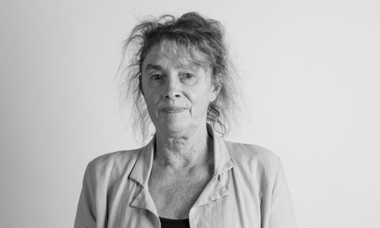
Libby Hogg
Read moreLibby Hogg

After Gabrielle (2023)
Tell us a bit about yourself
I was born in New Plymouth, graduated with BA, Victoria University of Wellington/Te Herenga Waka (1987) and took up photography while employed in a moving film-related role in Wellington. Completed Diploma in Illustrative Photography, Photography Studies College, Melbourne (2003) and returned to Taranaki in 2018. Photographic focus is on portraiture, landscape, still life with preference for monochrome that tells a story. Currently Exhibition Curator at Lysaght Watt Gallery,
Hāwera and have been in the role for 18 months.
How are you inspired in your art practice by the surrounding environment of Taranaki, where you live?
Taranaki is my birthplace and Taranaki Maunga has held significance as far back as I can remember, even though much of my life has been lived elsewhere. I’m inspired by driving to often out of the way places or by the people who live here that catch my photographic eye. I have some favoured locations, particularly inland roads off State Hwy 45 capturing the many moods of our Maunga, the rugged West Coast or living creatures that make Taranaki their home. No two photographic field trips are ever the same.
What would you like visitors to the exhibition to understand or sense from looking at your artwork?
‘After Gabrielle’ was taken a day or so after Cyclone Gabrielle made its destructive way across the region and was captured at Waiinu Beach, Waitotara, South Taranaki. Following a trip to Whanganui, I visited the beach and viewed the desolate windswept coast covered in small bits of debris. There was little of interest until I spotted the bleached-white remains of a small tree with roots upturned so expressively towards the expansive sky. The image, I hope, captures a sense of the
enormous power of nature but also hope for our collective future in Aotearoa.
Where do we go to find out more about you?
www.lysaghtwattgallery.co.nz
How did you get started as an artist?
I was introduced to photography via a film-related role, moved to Melbourne for formal photographic studies. Spent many years in the darkroom before moving to digital 8-9 years ago. Since back in Aotearoa, involved in several Camera Clubs to meet likeminded people, have works evaluated independently - Joint Supreme Winner, 1st Place Digital Monochrome, 1st Place Print Monochrome, 2023 Taranaki Interclub competition.
What advice would you give to a young, aspiring artist?
Whatever your chosen artform, if possible, get out there and meet others engaged in creative pursuits. Do not be afraid of constructive criticism it will help you grow as an artist; we never stop learning no matter what age. I have found being involved in my local gallery very rewarding and believe it has improved the approach towards my craft.
What is the most challenging part about working with your chosen media/medium for this artwork?
To be honest, this image was relatively challenge free, which is sometimes not the case, and I recognised its potential as soon as I saw it. I still find the myriad capabilities of the digital camera daunting, in many ways I use my digital camera much as I did the analogue. Should keep improving on post-production skills and hope to.
What are your tools of choice?
I use a CANON EOS 5D full frame digital camera, with fixed 50 mm portrait lens, 24-105 mm lens & 16-35 mm wide angle lens. I rely on a sturdy Manfrotto tripod & shutter release cable, reflector, just invested in a studio backdrop & some flash gear (latter still unused). Use Photoshop and On 1 RAW for post production.
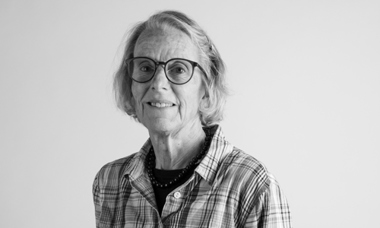
Maree Horner
Read moreMaree Horner

Geomorphic Ruminations - Triptych - 2023
Tell us a bit about yourself
Although Waikato-born, Maree Horner has ancestral roots back to Taranaki through both parental lines. Her early childhood was spent in the Waikato followed by formative years in Eastern Tāmaki Makaurau-Auckland. In 1974 she completed a Master of Fine Arts degree at Elam School of Fine Arts, University of Auckland and is known for her sculptural installation work from this period.
She and her family settled in South Taranaki in the early 1980s where she still lives and works. Since the 1990s, whilst teaching full-time, she has developed a cross-disciplinary approach to her practice, mainly combining print and paint into large scale mixed media graphic works.
How are you inspired in your art practice by the surrounding environment of Taranaki, where you live?
Whilst contemplative of both landscape and body, Geomorphic Ruminations – Triptych, is partly inspired by the lahar fields on the western flanks of Te Maunga Taranaki. The traditional construct of a triptych was generally used for religious altar paintings, but here serves to focus attention back on a nature-based world view.
What would you like visitors to the exhibition to understand or sense from looking at your artwork?
A sense of connection.
Where do we go to find out more about you?
www.mareehorner.co.nz
www.instagram.com/maree.horner/
What advice would you give to a young, aspiring artist?
Just do it.
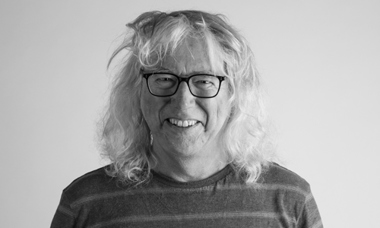
Paul Hutchinson
Read morePaul Hutchinson

Long Light on Paora Road (2023)
Tell us a bit about yourself
I came to Taranaki, Aotearoa, with my family from the UK in 1974.
I was very reserved and lacking in confidence, but I knew that I wanted to be an artist. I didn’t have the necessary school qualifications to enter art school. I ended up working part-time and painting and drawing as much as I could. I was entirely self-taught. In the early 1980s I was a part of TACO, Taranaki Arts Co-operative. It was the first time I had had any interaction with other artists. I worked in a studio alongside Michael Smither, Tom Mutch and others. I met Dale Copeland, and came to live in South Taranaki. In the mid-1990s we founded a Virtual Gallery, Virtual TART, on the early internet, the first of its kind in NZ.
How are you inspired in your art practice by the surrounding environment of Taranaki, where you live?
We are fortunate to live in a very beautiful part of the world. It is impossible to ignore the majestic grandeur of Taranaki Maunga and the Pouakai and Kaitake ranges. It is a relatively new landscape, in geological terms, and where I live, the numerous lahar hills, are a daily reminder of past cataclysmic activity. In fact, I live next door to Toka-a-Rauhotu, the guiding stone for Taranaki in the Māori mythology.
I have for many years, been in the daily habit of walking with my dogs, on the local beaches. Usually, Komene and the beach on Paora Road. I have experienced these places in all their seasonal and varied moods, making numerous drawings in my sketchbooks. I have also been inspired by the lahar hills, cut through by roads and dairy farms.
What would you like visitors to the exhibition to understand or sense from looking at your artwork?
I don’t really know what I expect viewers of my painting to understand. I was aware that the large pine that dominates the composition is not a native tree. Also the cellphone tower at the end of the road always seemed a slightly surreal intrusion on the landscape. The mountain has a light dusting of snow that is already beginning to melt off.
Where do we go to find out more about you?
I have a website paulhutchinson.co.nz. The VirtualTART site of course, a couple of dormant blogs, and the usual obligatory social media sites where I make a complete ass of myself.
What advice would you give to a young, aspiring artist?
Advice to young artist… hah! I don’t think they would be interested in any advice I could dish out! It’s a completely different world now. When I started out as an artist in Taranaki, everyone knew everyone else. There only were a couple of dozen of us. Now, there are literally thousands of artists working in Taranaki. I don’t know many of them to be honest. The only practical advice I can think of is to not get overly obsessed about exhibiting and marketing your art, especially early on in your career. Do it because you are passionate about it. Don’t worry about selling it.
What is the most challenging part about working with your chosen media/medium for this artwork?
For some reason, I did find this painting challenging. I spent a lot of time scraping bits of it off and redoing it. It is oil paint on linen, however, I have been incorporating the use of beeswax into my paint. It is sometimes referred to as “cold wax” to distinguish it from encaustic wax, which is melted with heat. The underpainting was made using red ochre I obtained from the cliffs at Komene. There is a spot that has iron oxide.
What are your tools of choice?
For tools, brushes obviously, but I also use various knives and scrapers to work and scratch into the wax/paint. I use pumice stones to rub the paint layers down.
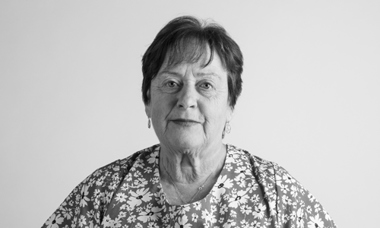
Karin Jury
Read moreKarin Jury

Ka Tūtaki Te Rāwhiti ki Te Hauāuru - When the East meets the West (2022)
Tell us a bit about yourself
My country of origin is The Netherlands. I visited Aotearoa 42 years ago to join my sister for her wedding in Urenui. The intention was to stay for a few weeks. On her wedding day, I met my husband who is of Ngāti Mutunga descent. We have adult children, grandchildren and great-grandchildren. I am happily retired after initially working as a teacher/tutor in early childhood followed by thirty years as a teacher and principal in primary schools.
How are you inspired in your art practice by the surrounding environment of Taranaki, where you live?
When I saw the first glimpse of the White Cliffs from Mōkau, the coastline, the rugged landscape and Taranaki mounga, 42 years ago, I knew that Taranaki was a place where I wanted to live. The scenery provides inspiration. In my case, it inspires me to create kākahu (garments) and paintings. One can't help feel like creating when looking at the majestic mounga. When listening to the sounds of nature, be it the birds singing during the day, the morepork and kiwi at night, or just the sounds of the wind and the insects, one enters a different zone. Taranaki is a wonderful place to live.
What would you like visitors to the exhibition to understand or sense from looking at your artwork?
This hieke is my gift to my beautiful moko Freya as she was my inspiration. The triangles (Niho Taniwha) depict story telling. It explains the coming together of two people; Mum from the East Coast and Dad from Taranaki. The nine triangles resemble Matariki as this star cluster was visible on the Eastern horizon during the time that Freya was born. The darker triangle in the middle represents Taranaki Mounga. The white feathers symbolise the Raukura of Parihaka. The blue line/awa weaves it all together.
Where do we go to find out more about you?
www.instagram.com/karin.jury/
How did you get started as an artist?
I enjoy creating. As a child and young adult, I used to draw, paint, take photos and make clothes. When I first came to New Zealand, a well-known weaver from Te Kūiti, Diggeress Te Kanawa, visited the Urenui Marae to teach weaving (raranga) with harakeke. This is when I was introduced to raranga kete and developed a love for it. Over the past few years, I have been a member of the Hetet School of Māori Arts. My kaiako is Veranoa Hetet, Diggeress's niece. My focus is on weaving hieke (raincapes), maro, piupiu and korowai.
What advice would you give to a young, aspiring artist?
Be authentic. Create what you would like to create. Have your own style. Practise, practise and practise. Be brave. Don't be afraid to make mistakes - they help you to improve.
What is the most challenging part about working with your chosen media/medium for this artwork?
The most challenging part has been preparing the harakeke. It took a while to find out how best to flatten the hukahuka (parts that hang down). The dye didn't hold very well either. This turned out to be an advantage as it softened the colours, which suited this kākahu.
What are your tools of choice?
My tools of choice are harakeke and paint.
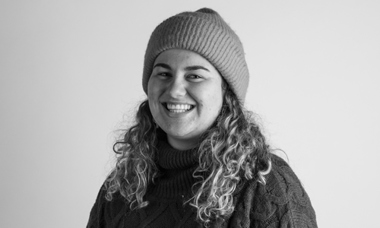
Annay Kara
Read moreAnnay Kara

The Red Coats (2023)
Tell us a bit about yourself
A Māori girl expressing herself through expression art.
Ko Maungatautari te maunga
Ko Waikato te awa
Ko Tainui te waka
Ko Maungatautari te marae
Ko Ngāti Korokī Kahukura te iwi
How are you inspired in your art practice by the surrounding environment of Taranaki, where you live?
I love Taranaki. The history here is pretty crazy and I feel like the more you learn about Taranaki the more you understand the history of Taranaki and the mauri this place holds.
What would you like visitors to the exhibition to understand or sense from looking at your artwork?
Expression art is crazy and that's what my art is. I want the visitors to look at my art work and try to put all my crazy ideas into a story. This story being the Māori land wars.
Where do we go to find out more about you?
www.instagram.com/annay_kara
What advice would you give to a young, aspiring artist?
Some people won't like your art work and that's okay ‘cause someone will love it, you just need to find that someone while staying true to yourself.
What is the most challenging part about working with your chosen media/medium for this artwork?
The most challenging part about working with pastels is how much they can smudge and get on everything.
What are your tools of choice?
I love a good pastel on a black canvas, it makes the colour of the pastels pop. I'm also crazy about texture, I love the way it pops out of the art piece and brings new life into the art piece. My favourite medium is probably paint, any kind of paint, I love bright colours and dark colours, I feel like they balance each other out real nicely.

MiSun Kim
Read moreMiSun Kim

Circle of Life (2023)
Tell us a bit about yourself
From South Korea I am. I started calligraphy at the age of 10, so I was familiar with handling large brushes. I came to Taranaki in 2017 since then I am proud to be a part of this beautiful art group.
I was awarded the Taranaki National Art Award in 2018.
I have been running a Sushi Cafe for 5 years now. I am also learning about Māori language and culture a little bit, as my current employee is a Māori person.
I thank the LORD for everything He has done for me.
How are you inspired in your art practice by the surrounding environment of Taranaki, where you live?
I live in a place where I can see the sea in the distance in front of me, and the magnificent Mount Taranaki in my backyard. Mount Taranaki looks different every day. It is a great blessing to live in a place where I can see the mountain and the sea that give me new inspiration.
What would you like visitors to the exhibition to understand or sense from looking at your artwork?
Seeds to flowers, flowers to seeds—a circle of life. Death may not be the end but the start of a new life. The aerial view of Mount Taranaki was breathtaking, evoking the sense of vibrant nature and life's continual renewal.
In the grandeur of nature, human fragility is evident. Yet, it is through nature's power that we endure. This painting aims to capture the essence of human life within this context, where the profound cycle of existence is depicted.
Where do we go to find out more about you?
www.instagram.com/artistmisun/
How did you get started as an artist?
My major was Chinese Culture in college, but found my calling in art 11 years ago when I met my mentor Chang, Woo-Seok who inspired me a great deal in Calligraphy as well as in Korean art.
What advice would you give to a young, aspiring artist?
Do not doubt yourself, and believe in your choices. And don't give up on it, and finish it to the end. There is no failure in this world. Failure only occurs when you give up your dreams halfway. Pursue your dreams and follow your heart. The world is your oyster.
What is the most challenging part about working with your chosen media/medium for this artwork?
To draw on the thin paper as HwaSunJi (Rice paper) is also a big challenge. But the most challenging part is that I use the Korean ink. People only see that as colour black. But in my piece, there are numbers of different tones and moods of black that depend on the works and the state that I am in.
What are your tools of choice?
Brushes, Inks and Korean Paper called HwaSunJi.
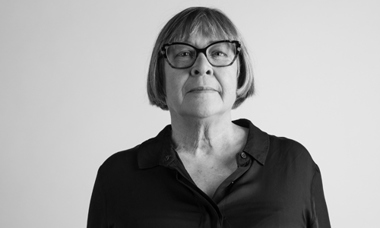
Suzan Kostanich
Read moreSuzan Kostanich

Fa'avasegaga (2023)
Tell us a bit about yourself
I have lived in Taranaki for approximately 7 years, prior to that the bulk of my life had been spent in Auckland. Self-taught, my art practice spans four decades or so of part-time "dabbling" in fibre art; retirement has afforded me the opportunity to extend this practice to a full time occupation. Primarily process-driven, my current work is a culmination of those early years of "dabbling", my starting point is making my canvas from laminating merino and kozo fibres together to produce a textured workable surface. This canvas is then stitched, painted and collaged to produce the final work.
How are you inspired in your art practice by the surrounding environment of Taranaki, where you live?
Taranaki is a wonderful place to be an artist, it has a vibrant arts community and after many years I feel I have found "my tribe". Its natural beauty and proximity to the coast engenders a feeling of peace and is a constant source of inspiration.
What would you like visitors to the exhibition to understand or sense from looking at your artwork?
Compartmentalisation (fa'avasegaga): The act of separating something into parts and not allowing those parts to mix together: Cambridge English Dictionary.
Fa'avasegaga seeks to challenge viewers to examine how they separate and package up different aspects of their lives.
Where do we go to find out more about you?
www.suzankostanich.com
www.instagram.com/suzankostanich/
How did you get started as an artist?
My work is in part a tribute to my mother who taught me how to embroider and sew from a very early age. For over four decades my practice was a part-time pursuit when family responsibilities allowed. Now retired and living in Taranaki it has evolved into a full-time practice supported and encouraged by a wonderful group of like-minded artists who have become "my tribe".
What advice would you give to a young, aspiring artist?
Practise, practise, practise every day. Even 20 mins devoted to some aspect of your practice every day will help you evolve.
What is the most challenging part about working with your chosen media/medium for this artwork?
Its unpredictable nature, the process I use to produce my canvas is different for every piece despite my doing exactly the same thing each time.
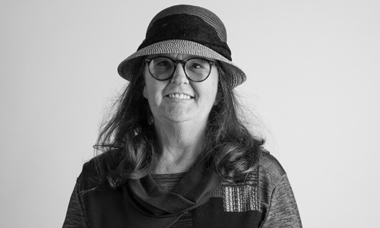
Veronica Lamont
Read moreVeronica Lamont

Home (2023)
Tell us a bit about yourself
I was in the central North Island back country without a TV. My imagination grew.
How are you inspired in your art practice by the surrounding environment of Taranaki, where you live?
I was inspired at age four when an old lady took me to a church. The service was long and the saving grace for me was how the light played on the stained glass windows as the sun passed over them. I thought when I grow up I am going to make glass things.
What would you like visitors to the exhibition to understand or sense from looking at your artwork?
Looking at my home will undoubtedly bring back many memories for many people.
Where do we go to find out more about you?
All my work is visionary. If people like what I make they can buy it from me, if not I am only too happy to keep it. Phone 027 451 9843.
How did you get started as an artist?
I watched a glass artist and then brought myself a cutter and got on with it. After much practice I actually cut out the shape I had been trying to. Success.
What advice would you give to a young, aspiring artist?
Where there is a will, there is a way.
What is the most challenging part about working with your chosen media/medium for this artwork?
I am not very good at drawing what is in my head and often spend days drawing until I get it right.
What are your tools of choice?
Glass cutter, light box, grinder, foiling machine, soldering iron.
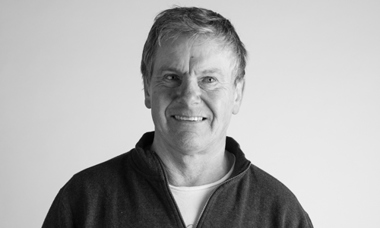
Richard Landers
Read moreRichard Landers

Tephra Fall (2023)
Tell us a bit about yourself
I have lived in Taranaki all my life.
Involved in the glass industry since 1981, a full-time artist since 1987, and a founding member of the Art Glass Association of NZ. Operating from my purpose-built studio and gallery in Ōmata.
I work with a range of glass applications including modern sculpture, kiln-formed glass, leadlight panels and stained-glass conservation. Many of my works are made from recycled materials.
How are you inspired in your art practice by the surrounding environment of Taranaki, where you live?
I think the proximity to such grand natural environment allows you to experience a vast array of changing 'moods', which if noticed can inspire a deeper curiosity and appreciation for them and everything around them.
What would you like visitors to the exhibition to understand or sense from looking at your artwork?
It is very interesting to learn the history of landform ... of Taranaki.
Layers of glass in a small way represent how the layers of Earth form and the centuries of buildup that contributed to how our province has benefited.
Where do we go to find out more about you?
Public Studio and Gallery,143 Croyden Road, New Plymouth
Phone 0276228131
How did you get started as an artist?
My passion for design is demonstrated in my commissioned work that has included pieces for churches, public spaces, marae, corporate facilities and private homes in both New Zealand and overseas. I am inspired by a chance to contribute to yesterday's, today's and tomorrow's living and working architectural settings.
What advice would you give to a young, aspiring artist?
Nature has everything
Eyes wide open
Ears wide Open
Believe
What is the most challenging part about working with your chosen media/medium for this artwork?
Glass is fragile, therefore very unforgiving. The main discipline is being aware that the material is transparent so nothing can be hidden.
What are your tools of choice?
The glass cutting wheel is the most powerful tool of all time - dividing glass with a simple hand tool is truly like magic, every time!
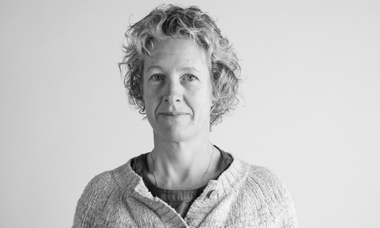
Juliet Larkin
Read moreJuliet Larkin

Volcano Bowl (2023)
Tell us a bit about yourself
I've lived in Ngāmotu since 2012 and grew up in Ōtepoti/Dunedin. I’ve made pottery on and off for the past 20 years. I learned how to throw on the wheel while living in Tochigi-ken, Japan, for two years while teaching English.
I completed a Diploma of Fine Arts from the Otago Polytechnic School of Art in 1992, majoring in Sculpture. I also hold a Masters in Science Communication.
How are you inspired in your art practice by the surrounding environment of Taranaki, where you live?
I enjoy spending time in the outdoors surfing, rock-climbing and tramping with my family. The forms, textures, shapes and stories I come across in the moana, on Taranaki Maunga, and the ngahere feed into my practice.
What would you like visitors to the exhibition to understand or sense from looking at your artwork?
It's up to them. The more time spent with an object the more you'll get back from it. Touch is also an important part of ceramics (though maybe not in a gallery setting).
Where do we go to find out more about you?
www.instagram.com/julietlarkin_art
How did you get started as an artist?
I spent a lot of time making things as a kid and my grandparents were both artists. I took jewellery night classes from the age of 15, which led to going to Otago Polytechnic School of Art following high school.
What advice would you give to a young, aspiring artist?
Keep on making things and don't compare yourself to others. Be curious and experiment lots.
What is the most challenging part about working with your chosen media/medium for this artwork?
Not knowing how the glazes were going to come out and react with each other - opening the kiln can be a lovely surprise or a big disappointment! Also the size of the bowl meant it was too big for my kiln so I had to transport from my studio to a bigger kiln.
What are your tools of choice?
My hands - to build the form with coils of clay.
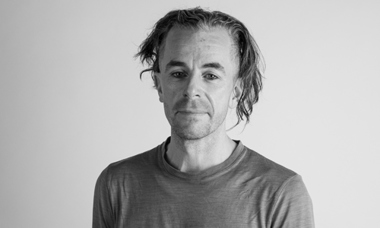
David Le Fleming
Read moreDavid Le Fleming

Hang Out the Washing, Viva La Revolución (2023)
Tell us a bit about yourself
Ko Ingarihi/Koitītiana/Wīwī te whakapaparanga mai
Ko Ashhurst te whenua tupu
Nō Manawatu ahau
Kei Ngāmotu au e noho ana, i raro i te maru o Mounga Taranaki
Ko Huatoki te awa e rere ana
He ringatoi ahau, he ringapuoro hoki
How are you inspired in your art practice by the surrounding environment of Taranaki, where you live?
I work from my home studio in Frankleigh Park, and one of the things that really influences my practice here is the natural light and seasonal contrasts. Previous to moving here I’ve worked in many different studios across London and Wellington, mostly with artificial light. Becoming more akin to working with natural light has its advantages, colour becomes more true and rich, and there’s a connection with the surrounding environment that creeps in too, contributing to the visual conversations. A friend once said when visiting the studio that she had a feeling of ‘toes dug in’ which very much resonated with me.
What would you like visitors to the exhibition to understand or sense from looking at your artwork?
Mainly that paint is a fluid thing. I personally like to see brush strokes, I want to see the wrangle with the paint, the witness marks and clues that someone has gone there to their flow state, and come out the other side affected by the experience and with a deeper feeling of curiosity than when they started.
Where do we go to find out more about you?
davidlefleming.com
www.instagram.com/davidlefleming/
How did you get started as an artist?
I studied for five years, in the Wairarapa and then in Wellington. Most of what I learnt though came about from my first studio in the late 90s. It was a shared studio in the back of Anvil House, opposite the Michael Fowler Centre in Wellington. There I was surrounded by other artists, working all hours into the night and day. We lived and breathed it, bouncing ideas off each other and just as importantly, we built our social sphere around our practice. It was really magical, and I still draw on those experiences today.
What advice would you give to a young, aspiring artist?
Invest in yourself, go to art school, get some life experience under your belt, and don’t be afraid to fail. Put some serious time into experimenting with your work and reach out to people for feedback/critique wherever possible.
What is the most challenging part about working with your chosen media/medium for this artwork?
I guess with oil painting, and portraiture in particular, the hardest part is executing the focal point, getting that expression right. I’ve learnt that the best approach for me is to go after the hardest part first.
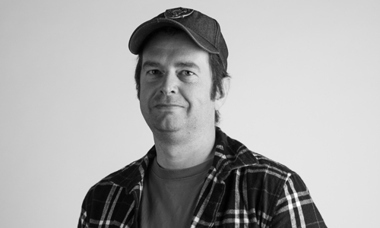
Ian Lewis
Read moreIan Lewis

Sunfruit Tree, A tree with fruit that, when consumed, imbues the eater with the power of the sun, allowing them to radiate warmth and light. Solanacaeon solisfructus. (2023)
Tell us a bit about yourself
I have recently returned home to Taranaki after spending many years living and working in the UK and around New Zealand. I'm currently living in Taranaki, and New Plymouth has always been my home town.
How are you inspired in your art practice by the surrounding environment of Taranaki, where you live?
Growing up in New Plymouth, I was inspired by the local art scene. I was attracted to the work of local artists such as Len Lye and Tom Kreisler and often spent time drawing local scenes. Some of my favourite childhood memories include visiting the Richmond Cottage, Pukekura Park and the Govett Brewster Art Gallery. This is where I developed an interest for contemporary and international art.
What would you like visitors to the exhibition to understand or sense from looking at your artwork?
These works are created with the help of AI, but the creative process lies in the concept. Our ability to come up with ideas and original thoughts is what separates us from machine. Artificial Intelligence is a tool that can be used for creative purposes, much like a paintbrush, or camera lens and with it we have the power to create new opportunity and a new world.
Where do we go to find out more about you?
www.ian-lewis.art
www.instagram.com/ianlewis_artist/
How did you get started as an artist?
I have always had an interest in drawing, and as a child I would spend many hours drawing and painting. Attending Art School allowed me to explore my interest further and my first exhibition was here in New Plymouth. Since then, I have exhibited around New Zealand off and on for the last 20+ years.
What advice would you give to a young, aspiring artist?
Be confident and proud of your work. Try and understand what your goals are. Do you make the work for fun? For yourself, or for others to see? Do you like to be part of a group, or work alone? Follow your interests and create what you like.
What is the most challenging part about working with your chosen media/medium for this artwork?
I have always been interested in technology. I’ve made short films, photographs, digital art and installations and I'm now incorporating Artificial Intelligence. What makes a work good in my mind, is the strength of the concept. Writing, researching and drawing ideas out are so important.
What are your tools of choice?
I spend time reading, writing and looking at new art. This is often where my ideas come from and once I have an idea, I use the most appropriate medium. I’ve always been interested in new technology and I'm comfortable using digital tech. I always have a workbook nearby and I note ideas and draw in it.
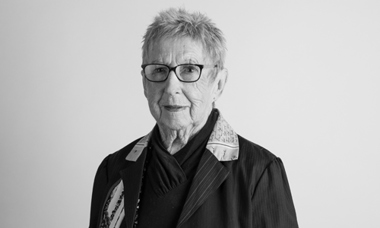
Fay Looney
Read moreFay Looney

Stent Road Power (2022)
Tell us a bit about yourself
New Plymouth born,1939.
An unexpected career in photography from the age of 38 has brought me great New Zealand experiences, friends and a national & international profile.
Currently owner-creator of the Koru on Devon Contemporary Art Gallery along with my home base Koru on Koru gallery.
While I have no iwi affiliations - 4 grandchildren and 3 great grandchildren have!
How are you inspired in your art practice by the surrounding environment of Taranaki, where you live?
New Zealand's landscape inspires me, "Taranaki light" influences my work. The heritage left by some inspirational Taranaki photographers past and present lives in my mind.
What would you like visitors to the exhibition to understand or sense from looking at your artwork?
How incredibly small we are compared to the universe. I hope my work "takes them there”.
Where do we go to find out more about you?
Just google.
How did you get started as an artist?
Employed by an Australian school photography company at age 37. I was invited to learn their photography system. After 2 years I started my own school business leading into a successful portrait & wedding business. Travelled New Zealand for 5 publishing commissions resulting in 5 successful NZ landscape books. Awarded several national awards plus 3 international awards, elected as the first woman chairperson of the NZ Professional Photographers Institute.
What advice would you give to a young, aspiring artist?
"There are no rules in photography, just foolish people who make them." A quote from Arnold Neuman after I asked him for a bit of advice at a seminar in America, with Josef Karsh and Annie Lebovwitz. I have lived by that advice. His clients included Stravinsky at his grand piano, and Picasso, amongst many others.
I happily pass it on. "Be yourself." Carry your camera everyday.
What is the most challenging part about working with your chosen media/medium for this artwork?
At my age? It’s being there! The most important factor for a moment of magic light and form.
What are your tools of choice?
Mirrorless camera. The medium I print on. Weatherproof, non-fade textured aluminium on which ambient light brings life to the image and can be used outdoors as easily as indoors.
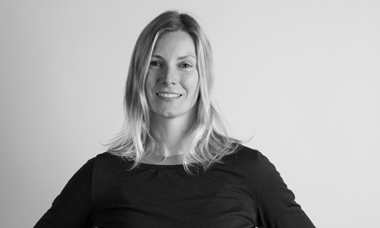
Belinda Lubkoll
Read moreBelinda Lubkoll

Frozen Volcano (2023)
Tell us a bit about yourself
I grew up in a small town close to Berlin and moved to New Plymouth in 2009. Working as a manufacturing jeweller since I finished my apprenticeship for Ringcraft Moana - I call Taranaki my second home now. Living in opposite worlds, I enjoy having a play with opposites when it comes to designing and shaping my stone settings.
How are you inspired in your art practice by the surrounding environment of Taranaki, where you live?
To take two opposites of the world which I call home. The icy lakes of Germany in winter-time to the deep ocean and volcanic landscape of Taranaki, New Zealand, I wanted to merge the two to create one piece of unique jewellery.
What would you like visitors to the exhibition to understand or sense from looking at your artwork?
To take a second look to find the unfamiliar, the rugged shapes of a volcanic rock that has been created with barnacles, a topaz that is set upside down and tiny diamonds for added ice crystals. It looks uncomfortable but this large ring wraps beautifully around a finger.
Where do we go to find out more about you?
Full time jeweller at Ringcraft Moana but my artist profile can be found on
www.instagram.com/belinda.lubkoll.jeweller/
How did you get started as an artist?
Working alongside local jeweller Rob Wright has sparked my interest for working with metals; working back in Berlin and having a great network with other goldsmith studios. There are not many of us left so it is good to have an exchange.
What advice would you give to a young, aspiring artist?
Who knows if it will pay your bills, if you enjoy it, do it, there is no guideline for how you will get there but to enjoy your steps along the way.
What is the most challenging part about working with your chosen media/medium for this artwork?
Shaping the piece to have it wrapping around the finger. One wrong angle and a slip with the engraver when shaving off a grain to set each diamond would have ruined the piece.
What are your tools of choice?
Silicon moulds taken from barnacles that I found at the beach, wax casts fused together, cast in sterling silver in a kiln and drilled settings for the larger stones with a pendant drill, hand engraver for grain setting the diamonds.
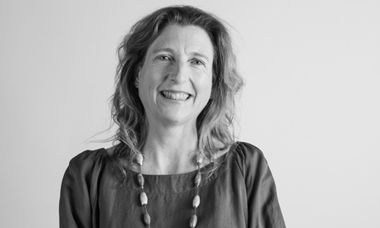
Pippa Lugg
Read morePippa Lugg

Sunset Solace (2023)
Tell us a bit about yourself
Taranaki has been home to international artist Pippa Lugg and her family for over three years.
“I grew up in South Africa. My father was a professional painter, sculptor and art educator and my mother, a weaving teacher.”
Pippa majored in painting during her arts degree at Waikato Polytechnic (Wintec/Te Pukenga), under lecturers Chris Heaphy and Tim Croucher among others.
She was a freelance illustrator for two decades but since living in Taranaki, has focused on her painting again.
How are you inspired in your art practice by the surrounding environment of Taranaki, where you live?
The majesty of nature: the forever changing moods of our maunga, our wild West Coast and beautiful sunsets are a constant inspiration for my artworks. “I always start my work by drawing a concept.” Pippa uses a palette knife and oils on canvas to develop this series of paintings. “The rich pigmentation of the oil paint medium allows me to enhance the vibrant colours of nature and to capture its vitality and movement through building layers and texture."
What would you like visitors to the exhibition to understand or sense from looking at your artwork?
After researching the Māori legend about Maunga Taranaki, I learnt that there are a few different versions to the ending. The one that inspired my painting, Sunset Solace, told of Maunga Taranaki being banished to the West Coast, heartbroken after losing his love, Pīhanga, but his solace was the beautiful sunsets. My painting acknowledges the reverence the Māori people have for Maunga Taranaki and the significance of this unique landmark to all of us lucky enough to call Taranaki home.
Where do we go to find out more about you?
If you would like to contact Pippa about her oil paintings, limited edition prints or art classes, please email: info@pippaluggcreative.com
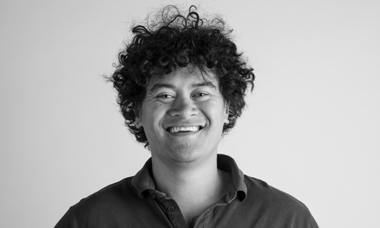
Meka Mauriri
Read moreMeka Mauriri

Te Anga Ake/The resurrection (2023)
Tell us a bit about yourself
I was born and raised in Normanby. I left Taranaki to pursue my career in the Royal NZ Navy, where I served for 6½ years and left so I could backpack South and Central America for 11 months before moving back to Aotearoa. I wanted to connect with my culture, so I moved to Gisborne to learn Māori wood carving for 5 years and I just moved back to Taranaki to teach and carve for our people.
How are you inspired in your art practice by the surrounding environment of Taranaki, where you live?
I'm inspired by giving back to my Māori ancestors who can no longer tell their story by learning our stories and history. It’s important for me to bring it to life through my carvings.
What would you like visitors to the exhibition to understand or sense from looking at your artwork?
There's always a way that Māori, Pākehā and all of our mixed cultures in Aotearoa can live, learn and thrive together – unity is key.
Where do we go to find out more about you?
www.instagram.com/meka_mauriri/
www.instagram.com/matariki_whakairo/
How did you get started as an artist?
I left the Royal NZ Navy in 2019 and moved to Gisborne where I knew no one, and wanted to start a new journey. I felt it was important to reconnect with my Māori culture and that's when I found Whakairo – Māori wood carving.
What advice would you give to a young, aspiring artist?
Surround yourself with artists in the area you want to pursue and make sure they are at a point that you would want to be one day. Always surround yourself with people better than you because it'll make you better.
What is the most challenging part about working with your chosen media/medium for this artwork?
Understanding the depth and ensuring it’s symmetrical and well-balanced. Whenever things are challenging, it’s all about thinking it through, giving it a go, and adjusting as you go.
What are your tools of choice?
Swiss chisel, hand grinder, planer, drill.
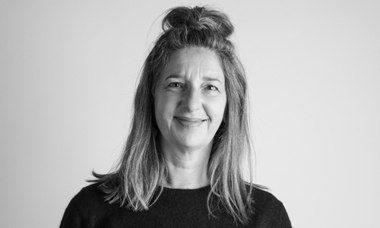
Kirsty McLean
Read moreKirsty McLean

The Swimmer (2023)
Tell us a bit about yourself
I come from Mimi, North Taranaki. My parents were both dedicated artists, environmentalists and teachers and they instilled in me a passion for all these things. Most of my adult life has been spent living and working in Asia. I taught Art at an International School in Brunei prior to returning to Taranaki in 2022.
How are you inspired in your art practice by the surrounding environment of Taranaki, where you live?
The rich colours of our natural surroundings significantly influence the colour palettes of my paintings. My connection with the Mimi River was a starting point for the idea development for this piece.
What would you like visitors to the exhibition to understand or sense from looking at your artwork?
The repeated shape of a swimmer creates a pattern that highlights the rhythm and flow of the physical movement. The rigid form of the figure contrasts with the fascinating shapes of its shadows which symbolises the interplay between the following dualities: body/spirit, nature/man, rationality/imagination.
Where do we go to find out more about you?
www.instagram.com/kirstymcleanart/
How did you get started as an artist?
From childhood, I spent time working next to my father, John McLean, in his studio. His guidance and mentorship are integral to my art practice. Also, I was fortunate to have some excellent art teachers at Polytech and teacher's college including Tom Kreisler, Fiona Clark, Dale Copeland and Paul Dibble.
What advice would you give to a young, aspiring artist?
Seek to be truly authentic in the development of your ideas. Experiment widely with media, techniques and processes. Be consistent in your practice.
What is the most challenging part about working with your chosen media/medium for this artwork?
Achieving accurate colour balance and tonal balance within compositions is always challenging for me.
What are your tools of choice?
I use flat hog-hair brushes with oil paint on canvas.
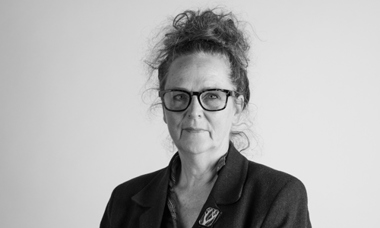
Robyn Morrison
Read moreRobyn Morrison

Angus (2023)
Tell us a bit about yourself
I live with my family on a small farmlet that borders the National Park just north of Ōkato. I work as a graphic designer but always enjoyed art-bits of sketching, painting and photography. I experimented for a while with a pinhole camera, taking images around the farm but then moved into digital because I liked being able to review an image immediately after taking it.
How are you inspired in your art practice by the surrounding environment of Taranaki, where you live?
The mountain and the ranges stand behind us and we look down onto the coast (on a clear day). We are open to all the elements and it feels a little wild and raw. Families have lived on the farm before us but nothing remains of their presence. My photos are of plant life from the bush and paddocks leaves, grasses, wild weeds and flax. Many specimens are kept in my workroom and change over time into new shapes and textures.
What would you like visitors to the exhibition to understand or sense from looking at your artwork?
To not be sure what they are looking at. A compilation of ordinary and unrelated images that when together create a presence without giving up their identity.
Where do we go to find out more about you?
www.instagram.com/robynmorrisonart/
How did you get started as an artist?
I love the process of capturing images and the endless possibilities for that image to maybe change into something unlike its original form. Just enjoying experimenting and playing around.
What advice would you give to a young, aspiring artist?
Do art for you, discover what you love and experiment without a set objective.
What is the most challenging part about working with your chosen media/medium for this artwork?
To look at what I'm photographing in different ways or contexts that might create an unexpected outcome. Not just making a pretty picture.
What are your tools of choice?
My phone camera and me.

Marianne Muggeridge
Read moreMarianne Muggeridge

Tree (2023)
Tell us a bit about yourself
Born 1952, grew up in Taranaki. Elam Art School from 1970 - 73. Travelled and lived in Europe, returning eventually to South Taranaki in 1981. Learnt the basics of screen printing from Michael Smither and produced band posters for my brothers Alan and Steve. Print making quickly became a medium for the development of my paintings. From textured brush strokes to flat layered colour.
How are you inspired in your art practice by the surrounding environment of Taranaki, where you live?
Entirely inspired by my surroundings and also driven to work with whatever or whoever is around me. We, Roger Morris and myself built a house with two studios on the edge of Taranaki Maunga in 1988-90. I have a clear and wide view of the Maunga from an upstairs studio. The tree in the print goes extreme orange in an autumn sunset, briefly dominating the blue and greens.
What would you like visitors to the exhibition to understand or sense from looking at your artwork?
This hand-made print evolved from a painting that started with a bright orange tree. The print allows me to find rhythms and shapes made in the painting that were not obvious to me when I began the painting. They become obvious when I try to understand why, or if, the painting works. I exaggerate the things that work, the colour, energy and the shapes.
Where do we go to find out more about you?
www.mariannemuggeridge.nz
email: oeo@xtra.co.nz
How did you get started as an artist?
At age 12 I heard about a place called art school. Astounded that you could do art all day and also call it school. I began drawing quite young and was only interested in drawing and painting people to begin with.
What advice would you give to a young, aspiring artist?
Do what you love most and try to follow your own piece of string. Art is no fun if you don’t start out absolutely loving it.
What is the most challenging part about working with your chosen media/medium for this artwork?
Finding inks that are strong and bright enough. I have printed the brightest yellows and oranges directly into the white of the paper to get maximum colour.
What are your tools of choice?
Oil paint, oil sticks, watercolours and oil-based inks, rich in real pigment. Good quality paper and canvas.
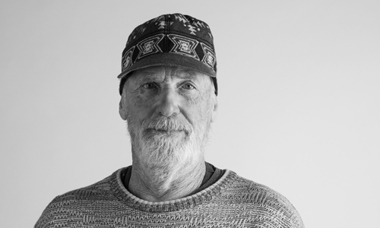
Thomas Mutch
Read moreThomas Mutch

Season of Growth (2023)
Tell us a bit about yourself
Australian born. I moved to Taranaki in 1971 and worked under Michael Smither for close on seven years. We formed a lasting relationship. Exhibiting together over many years. I’m an original T.A.C.O member. I worked under three Govett Brewster directors as an education supervisor, and produced community murals - including a two-storey mural in the old museum. I have work in the G.B permanent collection. I practice silkscreen printing, painting, sculpture. I moved to Kūaotunu on the Coromandel Peninsula and established Birds Nest studio where we, my wife (Raywin Lim) and I, ran a well-known arts festival for 11 years, exhibiting established NZ artists. I returned to Taranaki in 2022. Now exhibiting through Koru galleries.
How are you inspired in your art practice by the surrounding environment of Taranaki, where you live?
I own a property on the upper Tukapa street, so have a constant changing landscape of Mt Taranaki and the ranges. The mountain is an inescapable vision that from time to time yells out paint me. I like to mix up my practice with colour field abstract works inspired by the rocks I collect. One of the energy effects of Taranaki is the cloud formations and crisp clear light.
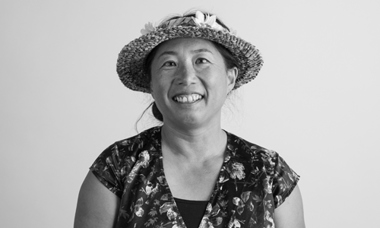
Sobranie Ngarin
Read moreSobranie Ngarin

From the Ocean to the Mountain (2023)
Tell us a bit about yourself
Rere mai, rere atu, Te Moananui a Kiwa, Tangaroa te atua, ka kite atu, ko Taranaki e tū kaha nei. E noho ana māua ko taku hoa rangatira ki Waitara. Ko Sobranie Ngarin taku ingoa. Tēnā koutou, tēnā koutou, tēnā tātou kātoa. Pacific is my ocean, Tangaroa is my guardian, look, here is Taranaki standing strong here. Me and my partner live in Waitara. Sobranie Ngarin is my name, greeting to all as one.
How are you inspired in your art practice by the surrounding environment of Taranaki, where you live?
“Te Harakeke, te kōrari, ngā tāonga whakarere iho, o te rangi, o te whenua o ngā tūpuna. Homai hei oranga mō mātou, tihē i mauri ora!”
When I first learned about this karakia, I thought I was just learning about a karakia. So many years later I have realised that this karakia has been teaching me about self love, about my relationship with myself. I am the treasure, myself, passing down from the sky above and the land below, and from our ancestors. It teaches me to empower myself, trust my heart and my intuition, from the internal to the external, all is one.
What would you like visitors to the exhibition to understand or sense from looking at your artwork?
That we are Harakeke ourselves as well. We are the treasure passing down from the sky, the land and our ancestors. Loving ourself from the internal to the external. Self-love is the most important relationship we need to have within ourselves. It’s a privilege to know about ourselves, and our words to ourselves is a very powerful force. Life is a journey, we can make it a good one or a bad one just by the words we are speaking to ourselves.
Where do we go to find out more about you?
www.sobraniesweaving.co.nz
How did you get started as an artist?
I got my calling in 2022, due to vaccination mandate. I gave up my previous job, I had to go within myself and think how to create a living for myself. I used to weave a lot in the community and I didn’t have to think about living, but now it has become something more serious.
What advice would you give to a young, aspiring artist?
Believe in yourself, you always have a choice to tell yourself that you can. If you tell yourself that you can’t then you cannot.
What are your tools of choice?
MY hands - He kai kei aku ringa hei kairaranga.
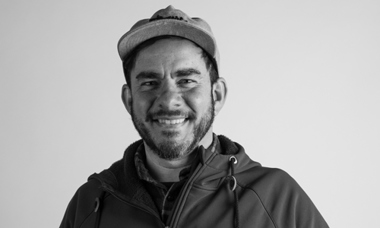
Ricardo Paes
Read moreRicardo Paes

The Power of the Maunga (2022)
Tell us a bit about yourself
I am a citizen of New Zealand but was born and raised in Rio de Janeiro, Brazil. With over 20 years of experience in woodworking, I started by making wooden surfboards in Hawaii in the early 2000s. Today, alongside my full-time job as a software developer, I manufacture cork bodyboards in New Plymouth. My family heritage is mainly Portuguese, with a part of it tracing back to the Brazilian native Maxacalis tribe.
How are you inspired in your art practice by the surrounding environment of Taranaki, where you live?
Living in Taranaki is like having a constant source of inspiration at my doorstep. The stunning presence of the Maunga reminds me of nature's power and beauty every day. The rich landscapes, amazing coastlines, and strong community of surfers all around me inspire my creativity. I love incorporating these elements into my art, whether it's the colours of the landscape or the energy of the community, Taranaki's surroundings are a big part of my inspiration for this surfboard.
What would you like visitors to the exhibition to understand or sense from looking at your artwork?
I want visitors to feel a connection to nature and the cultural heritage of Taranaki when they look at my artwork. I aim to convey a sense of awe and respect for the environment, highlighting the beauty and power of the Maunga which formed this landscape. Through my artwork, I hope to evoke emotions and spark conversations about conservation and appreciation for our surroundings. I want people to leave with a deeper appreciation for the landscapes and cultures that inspire my creations.
Where do we go to find out more about you?
How did you get started as an artist?
Back in Hawai’i at the Haleiwa Surfboard Company.
What advice would you give to a young, aspiring artist?
Don't be afraid to make mistakes. Embrace the journey of self-discovery through your art, and never stop learning and growing.
What is the most challenging part about working with your chosen media/medium for this artwork?
The most challenging part of working with wood inlays for this artwork is embracing imperfection. Each piece of wood is unique, with its own grain and character. The challenge lies in incorporating these natural elements into the design in a way that feels organic and authentic. It's about celebrating the beauty of imperfection and letting the natural qualities of the wood shine through.
What are your tools of choice?
Mainly a good bandsaw.
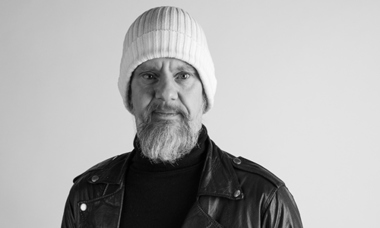
Todd Pomare
Read moreTodd Pomare

Stitched in my Soul (2023)
Tell us a bit about yourself
I currently live In Eltham Taranaki, my trade is fashion design, I have worked in the fashion industry, have run my own business in Eltham selling new fashion decor and furniture, but since Covid, I have closed shop and am now exploring combining my fashion experience into my art. Originally from the Bay of Plenty I arrived in Taranaki by accident and have never left, my iwi is from here - Te Āti Awa and Ngāti Mutunga. I feel like the mountain has brought me back to my homeland.
How are you inspired in your art practice by the surrounding environment of Taranaki, where you live?
My art work is inspired by my iwi connection to the mountain the land of Taranaki and the land wars which we walk on today - this connects to the modern events regarding the Treaty of Waitangi. Combining my craft of fashion and art has developed into what I call a modem quilt, by adding many techniques painting, pastels, marker and hand sewing with visual references to the Treaty and Taranaki has resulted in a piece that resembles a deconstructed flag stitched together with Aroha.
What would you like visitors to the exhibition to understand or sense from looking at your artwork?
To understand the history of Taranaki and the blood spilled on this land but ultimately to ask the question who owns this land and mountain? Does anyone really own the land or are we alI only custodians of this beautiful nature for future generations?

Lee-Ann Rapira
Read moreLee-Ann Rapira

The Portal (2023)
Tell us a bit about yourself
I’m a mother of 4 grown-up kids and have recently become a nana. My mother is from Taranaki and my father is from Mitimiti in the Hokianga, so Te Ātiawa, NgāRuahine and NgāPuhi are three of my iwi affiliations.
Art has become a solid pastime that I can rely on. I really enjoy that process of create-eliminate-create. I love how it takes you in and out of the unknown. It’s totally addicting.
How are you inspired in your art practice by the surrounding environment of Taranaki, where you live?
I think it’s easier to be inspired if you have security and safety, and I feel very blessed to have that. Taranaki holds a very special place in my heart. Inspiration is everywhere.
What would you like visitors to the exhibition to understand or sense from looking at your artwork?
Perhaps a sense of placement? We are all blessed to be living and breathing on this beautiful whenua beneath our feet.
Where do we go to find out more about you?
leerapira.com
www.instagram.com/lee_rapiranz
How did you get started as an artist?
Art has always fascinated me and when my kids were young, I helped them in a wearable art show at their kura and really loved it. In 2008 I won the Runner-up Supreme Award in the Taranaki Daily News Wearable Art Show and that solidified a desire in becoming an artist.
What advice would you give to a young, aspiring artist?
Art is really important. Time isn’t wasted when you’re being creative. There is always a place for art, so don’t let life get in the way, in the doing of it.
What is the most challenging part about working with your chosen media/medium for this artwork?
Meeting my high expectations. The standard is enormous and to create something that is authentic is the challenge.
What are your tools of choice?
Quality paint and anything that helps with mixed media.

Oriah Rapley
Read moreOriah Rapley

Waka of Solace II (2024)
Tell us a bit about yourself
I’m a fulI-time practising artist based in the Kaitakes. New Plymouth is my home town so I feel deeply connected to the landscape here.
How are you inspired in your art practice by the surrounding environment of Taranaki, where you live?
The sky, the light, the shadows on the landscape, the wind in the trees, the changing colour of the sea all deeply influence my thought process in creating new works.
What would you like visitors to the exhibition to understand or sense from looking at your artwork?
The concept behind the Waka of Solace is… the Waka moves through the trees at night guided by the Birds' innate navigational skills answering the call of those in need.
So when you hear the rustle of leaves at night, is it the breeze or the Waka of Solace moving through the trees.
Where do we go to find out more about you?
oriahrapley.weebly.com
How did you get started as an artist?
For many years I had an all-consuming passion for landscaping so moving into sculpture was an easy transition, both require thinking in 3D and I always imagine how my sculptures will sit in the landscape.
What advice would you give to a young, aspiring artist?
Trust your voice.
What is the most challenging part about working with your chosen media/medium for this artwork?
Things can always go wrong! Most challenging part of this piece was handling small pieces of stainless steel, gloves are just not nimble enough, plus impatience meant lots of burnt finger tips.
What are your tools of choice?
Diamond cutting discs and polishing
pads 9 inch grinder
5 inch grinder
Mig welder
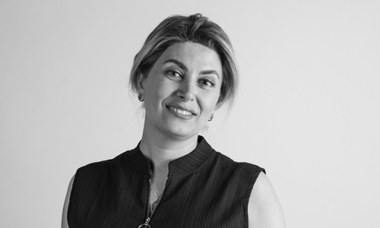
Pantea Rastegari
Read morePantea Rastegari

Looking Forward to Look Back (2021)
Tell us a bit about yourself
A self-taught artist with a lifelong passion for artistic expression. I have explored various mediums, including charcoal powder and oil paint, to create captivating and thought-provoking pieces.
How are you inspired in your art practice by the surrounding environment of Taranaki, where you live?
I get inspired by people's emotion, however for me, being able to do art, I need to be in a good mood. That's why I go for long hikes on the beautiful mountain we have here.
What would you like visitors to the exhibition to understand or sense from looking at your artwork?
I'd love to convey the message that everyone we meet through life has their own background and story and deserves respect and understanding.
Where do we go to find out more about you?
www.PanteaRastegari.com
www.instagram.com/pantea.art/
www.facebook.com/pantea.rastegari
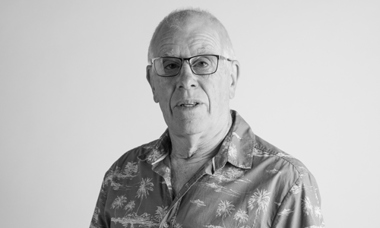
Ian Roberts
Read moreIan Roberts

Vehicles in miniature (2023)
Tell us a bit about yourself
I am a 74 year-old retired electrician who was born and bred in Taranaki and I’ve lived here most of my life. Except for eight years when we lived in our house bus, working and travelling as gypsies. I have no formal art or engineering training and have taught myself by watching and doing, this started with wood and bone carving while living in our bus. Now living in New Plymouth I have a comprehensive workshop to create in.
How are you inspired in your art practice by the surrounding environment of Taranaki, where you live?
My miniatures are created from actual vehicles most of which belong to people in Taranaki, or photos I have come across. Usually something about the colour or shape attracts me to them.
What would you like visitors to the exhibition to understand or sense from looking at your artwork?
I would like visitors to appreciate the time involved to create the dozens of very small parts that go to make up each complete vehicle. Each is a small-scale version of an actual car or bike that they may have seen.
There is definitely no 3D printing or AI involved in any of my work.
Where do we go to find out more about you
People may be interested to read the article about me printed in the February 2023 Shed magazine. I am happy to have my name and phone number published so people can contact me if they wish – phone 02108437272.
How did you get started as an artist?
My father had a workshop at home when we were children. I spent time in there building model boats, planes, trolleys and a multitude of other unfinished projects. I started to develop my hand skills during that time, these basic skills have improved with each project I complete.
What advice would you give to a young, aspiring artist?
Much of my work is done using simple easily available tools, files, tin snips, hacksaw, drills, soldering iron and a vice. Lots of the materials I use are scrap, like tin cans, wire, bits of wood, brass and other junk I have collected over a period of time. So anybody could start a project and they will find lots of information on YouTube.
What is the most challenging part about working with your chosen media/medium for this artwork?
Usually I see each project as a challenge because of the many extremely small parts I have to make. Plus the difficulty of trying to make them look as realistic as the life-size version.
What are your tools of choice?
Although I have a mill, lathe and drill press I mostly use common hand tools. I do have a collection of dental equipment that includes pliers, clamps, pin vices and tweezers that are particularly helpful during assembly. I often have to make special tools to produce a particular part or dies, these are sometimes never used again.
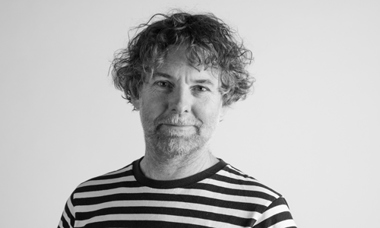
Ché Rogers
Read moreChé Rogers

White Noise (2023)
Tell us a bit about yourself
I spent my childhood living around New Zealand and Australia, settling in Christchurch. In the 90s I studied art and got involved in independent music. In 2000 I moved to Raglan where I co-founded the Jet Collective gallery. Cheaper real estate and good surf brought me to Taranaki in 2003. Soon after I was asked to do a pitch for WOMAD’s 2004 design which led to being TAFT’s graphic designer until I left in 2018 to pursue art full-time.
How are you inspired in your art practice by the surrounding environment of Taranaki, where you live?
The environment doesn’t directly or consciously inspire my work, but it definitely provides the place to live a desirable lifestyle, i.e., relatively affordable, good surf, mild climate, dramatic landscapes, world class galleries.
What would you like visitors to the exhibition to understand or sense from looking at your artwork?
Be reminded that sound and vision are connected as is everything.
How did you get started as an artist?
Being an artist was always an option that I was drawn to and it was also accepted and encouraged by my parents. I studied art at Ara | Te Pūkenga (Christchurch Polytech), plus short studies in photography, graphic design and web design.
What advice would you give to a young, aspiring artist?
Have something to say. Immerse yourself in the art world, visit galleries, watch documentaries, read art books, see what’s possible, discover a niche you’re drawn to. Find your thing, even if it seems absurd, average or derivative, focus in on it. Develop it over and over, experiment, go deeper and deeper, eventually something good and original will come.
What is the most challenging part about working with your chosen media/medium for this artwork?
Designing and building a container/frame that's sleek yet has enough room and strength to house the necessary electronics and light diffusion space, within a limited budget.
What are your tools of choice?
Saw bench, potter's wheel, tungsten blade paint scraper, drill, square, mitre cutting jig, ratchet tie down, Lumix Gh3 and Black Magic cameras, MacBook Pro.
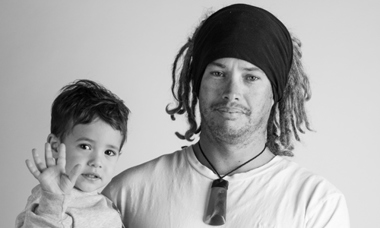
Ronny Rolfe
Read moreRonny Rolfe

Hinemoana/New Life (2024)
Tell us a bit about yourself
Was born and raised in Waitara, Taranaki and had done all of my schooling there.
I am of Ngāti Rāhiri (Te Ātiawa) descent on my father's side and Ngāti Maniapoto (Tainui) on my mother's. My occupation is as a scaffolder/rigger, which I have been doing for coming up 20 years, both here in Aotearoa and Australia.
How are you inspired in your art practice by the surrounding environment of Taranaki, where you live?
It’s hard not to be inspired by our beautiful region. Growing up near the sea had definitely influenced me, from fishing, diving, swimming in the Waitara awa and surrounding beaches, to eventually surfing during my teen years right through to present.
What would you like visitors to the exhibition to understand or sense from looking at your artwork?
To let them know that there is life for surfboards after their "use by date".
How did you get started as an artist?
I had creased a surfboard about 5 or 6 years ago which was beyond repair. I wanted to kind of upcycle it, so began tearing off the fibreglass and cutting into the left-over foam. After a few years, a friend said he was keen to get one made, which in turn has seen about 5 other old boards being carved out.
What advice would you give to a young, aspiring artist?
Have dreams, set goals and have fun with what you do.
What is the most challenging part about working with your chosen media/medium for this artwork?
With the foam, even though it is forgiving on the tools and easy to work with, it also has a chance of making mistakes which can make or break the design outlay.
What are your tools of choice?
Dremel is my go-to with its many attachments, hacksaw blades, craft knives, carving chisels, mixed range timber files, sandpaper. Also a P2 filter mask is a must have with the dust created.
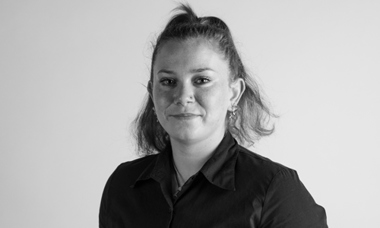
Portia Roper
Read morePortia Roper

Zeke (2023)
Tell us a bit about yourself
I am an emerging multimedia artist, born and raised in Taranaki. I went to New Plymouth Girls High School and studied art, art design, art history and photography. Following High School I studied a Bachelor of Fine Arts at Massey University Wellington. I'm interested in the interplay between collage materials, stitching and books, I search op shops for treasures, particularly illustrated animal books. Full of gems and resources, op shops inspire new works and provide materials for the sculptures I create using found objects, such as plastic animals.
How are you inspired in your art practice
My environment where I live inspires me for new works as seeing any kind of wildlife around my home gives me motivation to create new works. As I live on a farm there are various animals I see. I also have a big family of pets in my household; 4 cats, 6 fish, a goat and a dog.
What would you like the visitors to the exhibition to understand your artwork
I encourage the viewers to consider how these animals would walk and sound, what they would eat and where would they live given the challenge of multiple animal body parts. For example for Zeke - would he swim in the ocean with other fish, or would he be flying in bat caves with other bats?
Where do we go to find out more about you
I have an instagram art page which I post all of my creatures, www.instagram.com/_portiaart_/
How did you get started as an artist
I grew up in a household which always had colouring in books, paint and pens galore. My mother is also an artist as well which also inspired my creativity, throughout primary school and high school I was always involved in all the art classes and loved being involved in anything creative. I also have been a part of many exhibitions and art shows across New Zealand which has always kept me inspired to keep creating.
What advice would you give to a young, aspiring artist
I would tell them to enter into any art shows and exhibitions they can, I would also tell them to not be negative to creating art as I see so many young people saying that they cannot do art, that is a lie.
What is the most challenging part about working with your chosen media
For my work I worry that there will no longer be any books left for me to collect as I have a very specific type of illustrated animal books I look for. I always think of all the books that people throw away into the dumps.
What are your tools of choice
Books, scissors, craft knife, needles, embroidery thread, glue, tape and sourced antique frames.
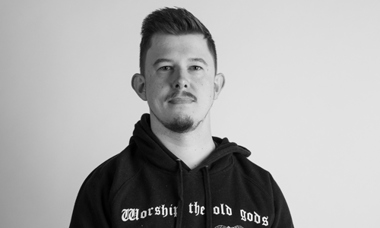
Joshua Sands
Read moreJoshua Sands

Elohim (2021)
Tell us a bit about yourself
I'm a New Plymouth local. I grew up in a restrictive Church environment that I am no longer affiliated with. This artwork, plus many others, are a method of "processing" that upbringing into something more positive.
How are you inspired in your art practice by the surrounding environment of Taranaki, where you live?
I appreciate the laid-back lifestyle and the supportive arts community.
What would you like visitors to the exhibition to understand or sense from looking at your artwork?
Peace.
Where do we go to find out more about you?
At the moment my main digital presence is my Instagram account, www.instagram.com/joshua_sands_art
What advice would you give to a young, aspiring artist?
Always trust your artistic intuition.
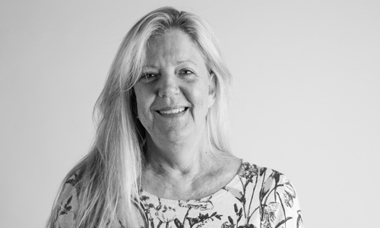
Yolanda Scholten
Read moreYolanda Scholten

Solace (2023)
Tell us a bit about yourself
My childhood was spent in Taranaki, but I have travelled extensively overseas for a number of years. Early in 2000 while living in Indonesia I took up a painting class as a hobby, but raising 3 children quickly took precedence. However, in 2015 upon my return to New Zealand I began painting in earnest when I joined an art class and was introduced to a number of different mediums and techniques by a wonderful, experienced and knowledgeable mentor who has encouraged me to persevere, experiment and take risks. Painting and expressing myself on canvas has since become a passion.
How are you inspired in your art practice by the surrounding environment of Taranaki, where you live?
Taranaki has some of the most amazing sunsets in the world. The lighting and colours are often so spectacular as the sun begins to set. These colours were the inspiration of this painting - pastel blues, pink and green tones, texture paste to represent the grit on a sandy beach. While a lone young woman enjoys a cool summer evening enveloped in the crisp lighting of a typical Taranaki sunset, enjoying the solitude and tranquillity of a lazy summer haze.
What would you like visitors to the exhibition to understand or sense from looking at your artwork?
I painted Solace in soft, pastel acrylic paint, texture paste was also applied to give depth and a ‘sandy’ gritty feel. The soft pastel colours combined with the free and natural flow of the model work well together reflecting a perfect summer evening of a young and vibrant woman simply enjoying the simple things in life. My intention is for the viewer to also be inspired by the calm tranquillity of the painting and to inspire a sense of peace and wellbeing.
Where do we go to find out more about you?
Instagram. yolandas_paintings
www.facebook.com/yolandas.paintings
How did you get started as an artist?
Ever since I can remember art was always my thing, whether doodling on scrap paper or later painting on canvas. As a qualified primary school teacher I incorporated art into every curriculum area possible. My own personal art adventure, painting on canvas, didn’t really springboard until early 2000 and what started as a hobby has since become a passion.
What advice would you give to a young, aspiring artist?
Any form of creativity is a wonderful way to relieve stress. Whatever medium you choose to work in, always stay true to yourself while keeping in mind that art is always subjective to different interpretations and that that should never be confused with criticism. Never give up, never stop learning, embrace advice and direction and enjoy!
What is the most challenging part about working with your chosen media/medium for this artwork?
The size of a canvas can be challenging, placement, dimensions and balance need to come together, along with colour and structure to create an aesthetically appealing piece of work. I always look at a completed piece of work (sometimes for months) and continue to ask myself, ‘would I hang this on my wall?’
What are your tools of choice?
I love to experiment with colour and texture. My favourite paintings are those pieces that combine a visual as well as a tactile element, inviting the viewer to want to reach out and feel the surface. I love painting oil either using a brush or a knife for a super chunky look. Acrylics are always great for their fast-drying properties which can lend itself nicely to some pens and pastels additions. Paste and charcoal are always a must. My latest projects have been collage and abstract painting.
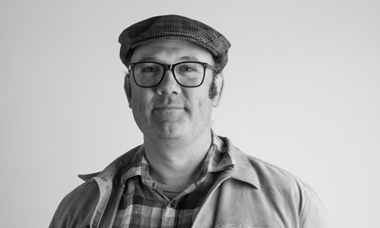
Nicholas Setteducato
Read moreNicholas Setteducato

Psychological Man (2023)
Tell us a bit about yourself
My background is in music, computers and photography. In 2001, I graduated from New York University with a degree in Studio Art. In 2008, I moved to New Zealand with a laptop and a guitar, and I spent the next decade working in the Wellington film industry. In 2019, I returned to my photographic roots here in Taranaki. I am passionate about music, pop culture, philosophy, and sarcasm. I spend my free time creating art for my own amusement.
How are you inspired in your art practice by the surrounding environment of Taranaki, where you live?
I make absurd and surreal images and videos that explore the intersection of the natural world and human technology. I spend a lot of my time absorbed in screens and pages of books, so the dramatic and evolving landscape of Taranaki serves as a significant counterpoint and a poignant reminder to occasionally lift my head and look around. First there is a mountain, then there is no mountain, then there is.
What would you like visitors to the exhibition to understand or sense from looking at your artwork?
The human condition is based on the absurd contradiction between our creature existence and our symbolic constructions. The conscious awareness of our own mortality drives us to engage in 'immortality projects' like religion, culture, and legacy— ultimately futile efforts to transcend death and define meaning in an irrational universe. My artwork, through alternating mechanical and organic motifs, embodies the duality of this contradiction. The perpetual running symbolizes both the futility and inherent beauty in embracing the absurdity of life.
Where do we go to find out more about you?
Website:
www.nicksette.com
www.instagram.com/neekosette/
How did you get started as an artist?
For me, being an artist is about the act of creativity and trying to make sense of reality. Creativity has always been important to me, regardless of the medium. As a kid, I’d draw endless pages full of Garfield cartoons or spectacular Martian spaceships. In high school, I picked up a 35mm camera and later I discovered the electric guitar.
What advice would you give to a young, aspiring artist?
Read lots of books, practice, talk to other artists, talk to very young people and very old people. Wake up early. When you go to create something, forget everything. Ask yourself honestly whether you are driven by creativity or society’s idea of being an artist.
What is the most challenging part about working with your chosen media/medium for this artwork?
This work was created using digital video editing tools and emerging generative artificial intelligence (AI) tools. AI is challenging in a practical sense - it is very early days for this technology so it can be difficult to control the output. It requires a lot of time and patience to learn to use the tools effectively, and a commitment to exploring in spite of many failures.
What are your tools of choice?
Canon 5DMark II, Adobe Photoshop, or a Ticonderoga HB2 pencil.
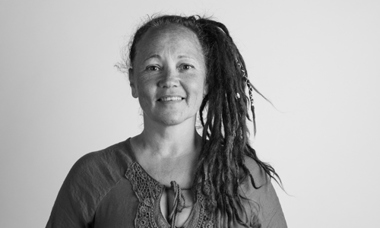
Luanna Sheridan
Read moreLuanna Sheridan

H!ne-nui-te-pō (2023)
Tell us a bit about yourself
Ko Te Ātiawa me Taranaki ngā iwi. I was born in Waitara. We moved to Australia when I was 14 and I moved back to Taranaki in 2008. I have a loving partner and am mum to a daughter and two sons, and nan to two mokogirls. I love Vedic wisdoms and practices and life has become an art of synchronising Te Ao Māori and yogic principles.
How are you inspired in your art practice by the surrounding environment of Taranaki, where you live?
Taranaki has a rich and diverse environment. Te Maunga Taranaki, te awa, te moana and ngahere are my favourite spaces to be and I make time to visit such spaces daily. Being in te taiao I feel a deepening connection to te atua and it opens my heart to hear the wisdoms of my tūpuna in a language I am yet to learn to speak ... however the wisdoms flow through artistic expression.
What would you like visitors to the exhibition to understand or sense from looking at your artwork?
Through birth, life, death and afterlife, our fiercely protective divine mother. We have the echoes of our tūpuna coursing through us, divinely connected and protected always. We must find our voice, remember and realign with mātauranga Māori ... before time drags it away, before it is lost. For we too, will become the echoes in generations to come. The time is now. H!ne-nui-te-pō is stirring to guide and protect her children.
How did you get started as an artist?
Perhaps because I am still a beginner... I've only been painting 2 years. What is an "artist"? And am I one? Could I merely be the artist tool for a true creator? If so, aren't we all artists? And all a beautiful artistic expression of something greater than ourselves. The art flows through me ... but not so sure from me.
What advice would you give to a young, aspiring artist?
Express freely. Breathe love into all you do, through your art and your life ... because living is a creative expression ... and art is an expression of living.
What is the most challenging part about working with your chosen media/medium for this artwork?
Perhaps because of my inexperience, the biggest challenge was the rapid drying time of acrylic paint. Coupled with my perfectionist tendencies the piece challenged me to either work faster or embrace the subtle imperfections as they arose in creation.
What are your tools of choice?
As a beginner I am enjoying using a large variety of tools, but thus far my favourite tool is a super long superfine liner brush.
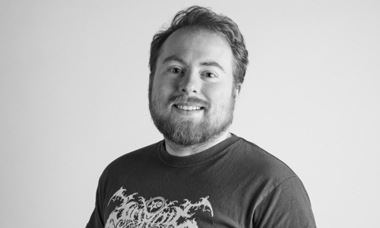
Connor Smith
Read moreConnor Smith

Nodus Tollens (Requiem to a Life Less Lived)[Triptych] I. For Andrei II. For Yasujiro Ill. For Ingmar. (2023)
Tell us a bit about yourself
I'm a contemporary photographic artist whose work takes cues from abstraction and post-modernism. My passion is film and my artistic heroes and influences are directors such as Tarkovsky, Ozu, Bergman, Kurosawa, Hitchcock, Mizoguchi and Fassbinder.
How are you inspired in your art practice by the surrounding environment of Taranaki, where you live?
Environment has little influence on my work.
What would you like visitors to the exhibition to understand or sense from looking at your artwork?
My work is very personal and often highly reflective of the mental state I was in when I created each piece. As such I hope that people will be able to resonate with my artwork on an emotional level, as well as on an intellectual level.
Where do we go to find out more about you?
www.instagram.com/connorsmithart/
How did you get started as an artist?
I did a diploma in photography 10 years ago and fell in love with the medium and soon found my artistic voice behind the lens.
What advice would you give to a young, aspiring artist?
Don't be disheartened by failure; for every win you get, you will invariably get a hundred failures. Stick it out!
What are your tools of choice?
Canon EOS 750d. And no photoshop, I achieve my results by balancing existing brightness and contrast.
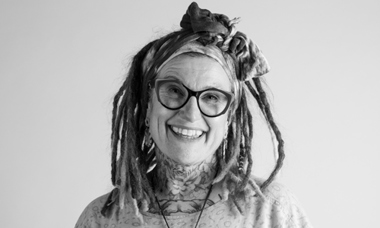
Holly Smith
Read moreHolly Smith

Tell us a bit about yourself
Tēnā koutou, my name is Holly Smith and I am an English artist who resides in Hāwera, South Taranaki. I have been lucky enough to live under our beautiful Maunga since i came to Aotearoa in 2006 and settled in the Taranaki region. I live with my supportive wife Sara and our fur babies Elton and Cheeko (our little dogs), and Agatha our grumpy cat who scares the life out of Elton and Cheeko. I can’t quite believe that in September 2024 it will be 18 years since I took the plunge and relocated to another country. It was something I had not really thought through but who knew that stepping on an aircraft into the unknown could be life-changing . I am so grateful to Sara and our NZ family and friends that have helped me along the way. I have swapped booze and ciggies for fresh air walks and art making, which is much better for my health and wellness and helps me to relax after my busy day job as a social worker. In my 50th year I am grateful for the loving upbringing my parents were able to give me in the UK and the close friendships that I still have (thanks to messaging and video calls). I use artmaking as a therapeutic tool for myself and can be reflective about life when creating. I work with bright bold colour most of the time as it helps me to speak without talking and to feel joy even at times when finding joy is a struggle. I am so happy to be part of the Home Work exhibition and to those taking the time to stop by and view all the works on display. I hope there is something that resonates with each one of you.
How are you inspired in your art practice by the surrounding environment of Taranaki, where you live?
I thought that my creativity had been lost until I relocated to Taranaki from England in 2006. It was from being around the beautiful Maunga, people and land that I started to find myself again after battling with my mental health and addiction. 70s child is an acknowledgment to the decade I was born and the vibrant patterns of the 1970s that I still adore today. It reminds me of our small brick family home that we once shared in Essex, our wallpapers that were made of fabulous patterns and the feeling of happiness.
When I arrived in Taranaki I never thought I had a culture or a story of my own however I found it under the Maunga.
What would you like visitors to the exhibition to understand or sense from looking at your artwork?
Joy, Happiness, Fun, Nostalgia but on a personal note from me - when creating this piece I also had a feeling of sadness, fun times gone by, family passing away and how did I get to be the adult? I still have the sense of longing for my parents as their child. This piece brings about mixed emotions really - initially it appears bright and bubbly but underneath there is a deeper meaning. When I describe this - I feel that I am also describing myself. Sometimes those around me do not see that part of me - or perhaps I do not allow them to see that part of me.
Where do we go to find out more about you?
www.instagram.com/hollysmithartist/
Facebook, Holly Smith Art
How did you get started as an artist?
I reconnected with art in 2017/18 after struggling with sobriety and breast cancer. I found it gave me a whole new focus, positivity and a way of self-healing.
In 2022 I discovered the Learning Connexion and began my art first course - (I always wanted to go to art school). I absolutely loved it and I got to explore new ways of art making I had not thought of.
I am currently studying level 5 at TLC Distance Learning and it is wonderful.
What advice would you give to a young, aspiring artist?
I'm still learning every day and I am 50 this year. All I would say is go for it- art is a wonderful therapeutic tool not only for yourself but for the viewers of your work. I understand it's difficult not to compare yourself to others but the wonderful thing about being uniquely you is that YOU MAKE YOUR OWN ART. Have fun, explore, celebrate the wins and laugh at the disasters. I once tried a portrait of my wife Sara and we laughed so much we were in tears. Needless to say portrait work and realism is not my area.
What is the most challenging part about working with your chosen media/medium for this artwork?
I found it a challenge making a large pattern on the canvas - I had a vision of what I wanted it to look like but had never created anything like this before. To be honest I'm never fully happy with any piece I make but I think that's us artists isn't it - we are all so self-critical.
What are your tools of choice?
Acrylic paint, I love posca pens, I have also started exploring screen printing on paper with acrylic and ink - this is fun.
Thank you so much for viewing my work, lots of love Holly.
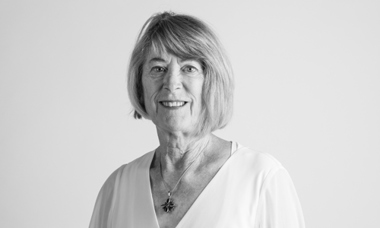
Anthea Stayt
Read moreAnthea Stayt

Rainbow Pot (2023)
Tell us a bit about yourself
New Plymouth is my birthplace and where I married and raised my children. I have travelled extensively throughout Europe and Asia and lived in Australia and the South Island. I have been drawn back to New Plymouth by strong family connections so it is once again my home.
How are you inspired in your art practice by the surrounding environment of Taranaki, where you live?
The inspiration for my artwork comes from within, but is enhanced by living in the environment that I love - right beside the ever-changing ocean, with stunning views of the mountain and ranges as well as the beauty of sunrise and sunset skies.
What would you like visitors to the exhibition to understand or sense from looking at your artwork?
My intention is to create an artwork that will immediately capture attention. By using such vibrant paints to decorate the form, I hope to uplift the viewer through the energy of colour. Then hopefully they will be enticed to linger and discover that, with imagination, surreal images can be found within the intriguing patterns and shapes.
Where do we go to find out more about you?
artbyanthea.co.nz
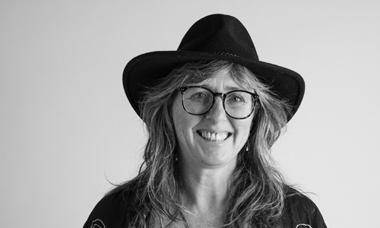
MB Stoneman
Read moreMB Stoneman

Ode to Detritus (2023)
Tell us a bit about yourself
I’m a printmaker, poet, book publisher and community arts worker. Born and bred in Taranaki, I dropped out of studying fine arts at Taranaki Polytech in the mid 90s to explore other realms. I love journeys, weird people and out of body experiences. I have a super-power of lip-reading, and secretly want to be a spy. I deeply enjoy the historical origins and alchemy of printmaking, the physicality of creating the matrix, the magic of pulling a print.
How are you inspired in your art practice by the surrounding environment of Taranaki, where you live?
I grew up with the view of a dormant volcano from my bedroom window. My current home is a 150-year-old BNZ in Pātea, full of stories and stuff. The west coast is rugged and rich, with the blackest sand that burns bare feet and sparkles endlessly. I float my body in the body of water at the river mouth, pull endless weeds from volcanic soil writhing with worms, and make dark, sparkly prints. Life is simple and good here.
What would you like visitors to the exhibition to understand or sense from looking at your artwork?
I made ‘Ode to Detritus' in response to the Covid pandemic.
The word “detritus” refers to waste or debris; an ode is a dedication, to praise something meaningful.
My work depicts a used, discarded disposable face mask – a representation of a practical object, a global symbol of our shared experience of the pandemic. Its associations are insidious and complex, uncomfortably reminiscent of a time of great uncertainty and threat. Masks hide and protect our weaknesses, fears, and vulnerabilities.
Where do we go to find out more about you?
www.instagram.com/mbstoneman/
How did you get started as an artist?
I've made art ever since I can remember. I started printmaking as my main practice around 10 years ago, by learning techniques at Print Summer Schools run by Print Council Aotearoa NZ, originally held in Whanganui. Through these opportunities, I've met many clever and generous artists, always willing to share knowledge and skills and share their love for ink-slinging.
What advice would you give to a young, aspiring artist?
Experiment and explore as many different mediums and processes as you are interested in and have access to. Learn art history. Read and explore the work of artists who excite you. Persist in trying to articulate what you want to portray and reveal. Work hard. Play and fail. The main aim is to find the thing that spins your wheels.
What is the most challenging part about working with your chosen media/medium for this artwork?
Mezzotint is a very demanding intaglio printmaking process. Rocking the plate, using a tool with fine teeth, creates a rich, velvety black base. The image is created by burnishing the plate at different pressures, gently scribing grey tones to bright whites. Multiple proofs need to be made to see progress and the image is reversed when printed.
What are your tools of choice?
My studio in Pātea houses a large etching press, a cylinder editioning letterpress that weighs a tonne, antique lead and wood type and plan drawers full of paper and prints. For this work on a copper plate, I used a mezzotint rocker, three-sided straight burnisher, an ink roller - with moveable lead type. Hand-printed edition of 20, on Hahnemuele paper.
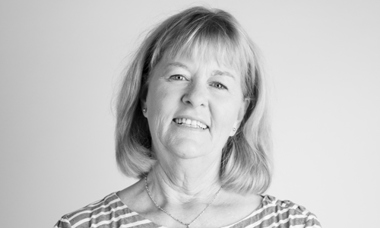
Pauline Sutherland
Read morePauline Sutherland

Clocktower (2023)
Tell us a bit about yourself
I have lived all my life in New Plymouth. I trained as a nurse. After 20 years of nursing at Taranaki Base Hospital I gave it up to pursue my passion for art. I am married to Jamie and we have 3 children and 4 granddaughters. We are very fortunate to have all our family living in New Plymouth also. This gives me the opportunity to explore and share the region with them.
How are you inspired in your art practice by the surrounding environment of Taranaki, where you live?
I have spent all my life sailing on the sea. This has been a big influence in the subjects of my paintings. I enjoy watching the formations of the waves and how light plays on the water. I am very proud of Taranaki and all it has to offer. I like to paint parts of our region which people can relate to.
What would you like visitors to the exhibition to understand or sense from looking at your artwork?
The Clocktower is an iconic landmark in New Plymouth. It sits proud above the street watching and controlling the tardiness of the city. I tried to capture this by exaggerating the perspective. Many tricky but subtle angles proved to be a real frustration at times.
How did you get started as an artist?
After our last child started school I decided to attend a watercolour class in Inglewood. This gave me the motivation to enrol at WITT to do the Visual arts degree. I got the opportunity to exhibit at the Victoria Henwood gallery. After a sell-out exhibition I had the confidence to pursue my artist's career.
Now I produce limited edition prints and original works which I sell at Jane’s Gallery, Robe Street, New Plymouth. I have been painting for 25 years and still enjoy the process.
What advice would you give to a young, aspiring artist?
Practice DOES make perfect. Research other artists to see what style they use and why. Paint small studies on these styles to see if any would help develop your style.
What is the most challenging part about working with your chosen media/medium for this artwork?
I had two challenges doing this painting. The first was mixing up enough paint to cover all the concrete blocks as if I didn't have time to finish that day I found I couldn’t mix the exact colour match the next time. I like doing many coats to produce vibrant colours. I went through many tubes of paint.
The second challenge and probably the hardest was the perspective. It proved such a headache at times I would put the painting aside for months before revisiting it again. This painting took 3 years to complete because of it.
What are your tools of choice?
I prefer oil paint. I like the way it takes time to dry giving me a window of opportunity to manipulate the paint. I use soft brushes rather than the traditional hard, dry brushes. This is so I can get clean lines and feel the flow of the paint. This is hard to achieve with the traditional oil brush.
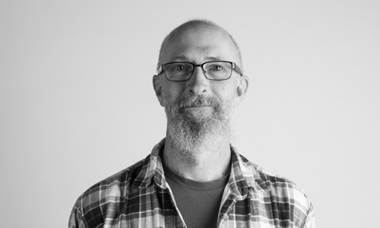
Phil Taylor
Read morePhil Taylor

Echoes (2022)
Tell us a bit about yourself
Originally from New Plymouth, I spent 10 years living overseas doing all sorts of jobs along the way. From building in Australia and running a Backpackers Hostel in Ireland, to managing a pub in Mallorca. On returning to New Zealand I settled back in Taranaki with my partner and worked as a builder for many years. I now mentor woodworking and hopefully inspire others to create things that make them happy.
How are you inspired in your art practice by the surrounding environment of Taranaki, where you live?
My inspiration for my sculptural style comes from the rugged Taranaki coastline, the weathering or cliffs, broken shells and driftwood. I can imagine one of my pieces washing up on the shore, or being half exposed in a cliff like the remnant of an ancient sea creature. The use of mixed timbers from various species adds to the texture and colour of each individual piece.
What would you like visitors to the exhibition to understand or sense from looking at your artwork?
I hope that my work invokes a sense of wonder and intrigue, not just about the process by which it is made, but imagining how the original piano was used to mark the passage of time. Being built in the 1880s, it would have marked many historic events, as well as many personal ones of those who possessed it during its long, yet undocumented history.
How did you get started as an artist?
The process started ten years ago, thinking about how to create my process. For about six years I would run through the possibilities mentally, thinking about the various parameters (and discovering new ones). Visualizing how I could make it work. Then about four years ago I made my first proof of concept, followed by my first full-scale sculpture.
What advice would you give to a young, aspiring artist?
Do what you love, what challenges you, express things that inspire you. Not everyone will “get” it, that's ok. Sometimes art makes us scratch our heads, sometimes art blows our minds. Yours will blow someone's mind. It is nerve-wracking to put it out there, don’t let self-doubt stop you and see setbacks as learning experiences.
What is the most challenging part about working with your chosen media/medium for this artwork?
Using mixed timbers can be a challenge, different species have different properties that have an effect on the construction process. With my method of sculpture, I can determine quite a bit from the outset, choice of timber, starting point and the mathematical variables, however the timber has its own input and that part is what makes it magical for me.
What are your tools of choice?
Self-made jigs and tool attachments. Each issue that I encountered during the “how do I do this” phase required a unique solution, some existed already, some needed modifying to do what I wanted, others I had to create myself. Most are part of my guarded technique.
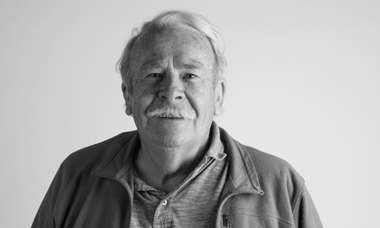
Howard Tuffery
Read moreHoward Tuffery

Local landscape (2023)
Tell us a bit about yourself
I was born in New Plymouth and spent my childhood on Fitzroy Beach. Completed my education at New Plymouth Boys High, then Otago University.
Began designing, making and selling wooden furniture in 1974 and established a studio in rural Inglewood. My work slowly developed from functional furniture towards carving and sculpture.
1983 - awarded Arts Council grant to study and work with artists in Australia, USA and UK. Moved to Urenui and re-established a studio in 1987.
I continue to work in wood and stone and exhibit widely.
How are you inspired in your art practice by the surrounding environment of Taranaki, where you live?
I think of my work as a connection to my surroundings. I view Earth and my own land as living and moving like all things in nature. I'm interested in the forms, patterns and textures of our landscape, the geometric cones of Taranaki, organic shaped lahar hills, river stones and surf, our volcanic landscape is evidence that the land is fluid and changing.
We also have a connection and dependence to the land and there is need to protect the environment and cultural sites. My home and studio border the Mimi estuary, an area of cultural significance and biodiversity.
What would you like visitors to the exhibition to understand or sense from looking at your artwork?
To contemplate the unique volcanic landscape that is Taranaki. The dominance of the mountain and the power it influences over every aspect of life here. That physical shape of the land, the soils, the beaches, the weather, the way you must drive around it to get anywhere or how you feel when you look each morning to find the mountain.
Where do we go to find out more about you?
I invite interested people to contact me by email or phone. I have a sculpture garden and gallery at my studio and home, open by appointment.
Email - waitoitoi@hotmail.com, phone 06 7523340 or 0212391272
How did you get started as an artist?
It was my enthusiasm for the material and the desire to make things that got me started. It is the process of making sculpture that keeps me learning and keeps me making.
What advice would you give to a young, aspiring artist?
Keep doing your thing and show your work when the opportunity offers.
What is the most challenging part about working with your chosen media/medium for this artwork?
I collect and use local materials, wood and stone. The discovery, handling and storage builds a relationship/history with each stone or timber. Making the best use of my materials is my greatest challenge.
What are your tools of choice?
Techniques and tools are only part of the process. Anything that works for you is OK.
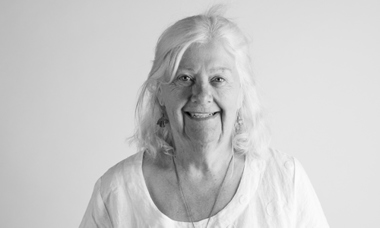
Sarah Tullett
Read moreSarah Tullett

Tongapōrutu Landform (2022)
Tell us a bit about yourself
I was born in Blenheim and when I was 6 we moved to Taranaki. I am fortunate to have grown up in a creative family and this provided me with the motivation to create. Dad was a Taranaki Herald journalist, painter and author, Mum a secretary at Westend School and a potter. I continue to be surrounded by creative people. My brother John Tullett casts bronze bowls, my husband Wayne Morris makes assemblage art and my son Stuart Morris is a painter.
How are you inspired in your art practice by the surrounding environment of Taranaki, where you live?
My practise is inspired by the natural environment, leaves, trees, stones, rocks and the beach. I have always loved Tongapōrutu and was intrigued to learn that the area has its own geological age. The cliffs have layers of grey rock and sandstone which at times shine and the beach is shimmering black sand.
I am always inspired by Taranaki Maunga.
What would you like visitors to the exhibition to understand or sense from looking at your artwork?
I am hoping that the artwork evokes the sense of the pressure of the Tongapōrutu rock pressing down on the layers below and compressing them over time. The artwork is black for the black sand of the beach. While representing the layers of rock in the cliff faces, the artwork also suggests the view of the Maunga from Tongapōrutu beach looking over the sea, particularly when there is a cloud cap. The fleck of gold (from my gold panning in the South Island) represents the treasure and value that is Taranaki.
Where do we go to find out more about you?
Facebook: Sarah Tullett Jewellery
www.instagram.com/sarah_tullett_jewellery
How did you get started as an artist?
I always aspired to be artistic but never managed anything to my satisfaction until I stopped working. I searched for an artistic avenue and was fortunate enough to attend the first Jewel and the Jeweller jewellery making course, discovered jewellery and fell in love with making it. Jen and Sam were amazingly generous with their time and skill sharing and Jennifer Laracy continues to be my mentor. The Jewel and the Jeweller is an inspirational Jewellery Art Gallery.
What advice would you give to a young, aspiring artist?
I still consider myself an aspiring artist and am young on my artistic journey. My advice would be to keep searching until you find your passion. Find people who are happy to help you on your journey and who are fun to be with and help other aspiring artists on their journey when you can. Be collaborative. Keep playing and experimenting and enjoy the happy accidents. With canvas you can paint over things you don’t like and I can melt the silver and start again.
What is the most challenging part about working with your chosen media/medium for this artwork?
Every time I heated the silver it changed colour so I resolved this by dipping the silver in liver of sulphur to turn it black. It was tricky soldering such a small piece of gold onto such a large piece of silver because of the heat differences between the two metals.
What are your tools of choice?
Gas torch, pliers, solder, sand casting equipment. I love casting silver in beach sand.
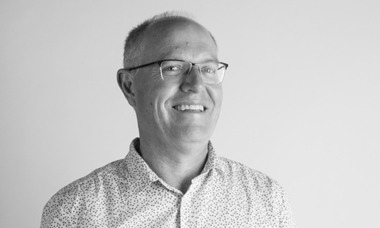
Leighton Upson
Read moreLeighton Upson

Becoming by the Kohekohe Tree (2023)
Tell us a bit about yourself
My grandparents were fortunate to have had an ancient grove of native lowland forest on their coastal Taranaki farm, located on Taranaki iwi lands. Every school holidays, I spent time amidst the enormous tawa, kohekohe and pukatea trees and thick, lively green undergrowth, which deeply affected me. I've completed two Masters theses exploring the potential of painting and questioning landscape. I continue this advocacy for lowland native forest through art within a Ph.D.
How are you inspired in your art practice by the surrounding environment of Taranaki, where you live?
The Taranaki lowland forest is rich, vibrant, and wonder-filled, incredibly invigorating and inspiring. I have been painting within a grove near Maranui Gully in Pukekura Park, growing close to it. Motivation also stems from the overnight incineration of 95% of the 80 million-year-old Taranaki lowland forests. With just 5% remaining, our urbanized population is disconnected from once-plentiful trees like kohekohe, pukatea, and tawa. This artwork recognizes our responsibility to the ecology we coexist with - being an example of having deeper personal relationships with our local native plants.
What would you like visitors to the exhibition to understand or sense from looking at your artwork?
Though open to any interpretation, my art aims to evoke emotional, conceptual and perceptual experiences involving native forest. I hope visitors feel my emotional bond with the lowland forest, inspiring contemplation on their connection with native plants and a commitment to planting natives. Recognising kohekohe trees would be a bonus. Additionally, I aim to shift perceptions, encouraging an intimate appreciation of the forest's diversity and liveliness over distant 'scene' admiration.
Where do we go to find out more about you?
www.instagram.com/leightonupsonart/
How did you get started as an artist?
My journey as an artist began with a natural inclination for imaginative drawing. Art School provided me with the skills to further develop. However, it was my deep connection to our lowland native forest that ignited my artistic voice. Through art, I found a means to advocate for the close appreciation and regeneration of this precious ecosystem.
What advice would you give to a young, aspiring artist?
Be sincere. Be authentic. Contemplate. Challenge. Be open to letting things resonate with you. Respect your audience by avoiding cliche and unimportant stuff.
What are your tools of choice?
My tools of choice include painting on board or canvas, drawing, and creating contemplative, thought-provoking videos.
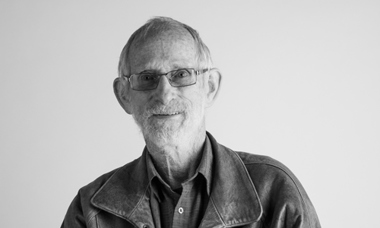
Tony Waterson
Read moreTony Waterson

Red Magnolia, Lidded Box (2023)
Tell us a bit about yourself
I was brought up on my parents’ dairy farm and am a builder by trade, (but my wife and I did go dairy farming for a few years). I have always loved working with wood and have been turning wood for approximately 40 years and during this time started carving as well.
How are you inspired in your art practice by the surrounding environment of Taranaki, where you live?
Taranaki is such a beautiful place and inspiration comes easily in the shape of trees, flowers and our wonderful variety of different woods to work with as each piece of wood has its own grain and every piece is different, so it's like a surprise package.
What would you like visitors to the exhibition to understand or sense from looking at your artwork?
I would like people to understand what can be created from the different pieces of wood that surround us, and hopefully inspire others to have a go.
Where do we go to find out more about you?
People can phone me on 022 3124861 if they would like to contact me regarding my work or to see other pieces that I have created.
What advice would you give to a young, aspiring artist?
Do what you love and just practice until you are happy with the results.
What are your tools of choice?
A good lathe, plenty of chisels and lots of sandpaper and heaps of patience.
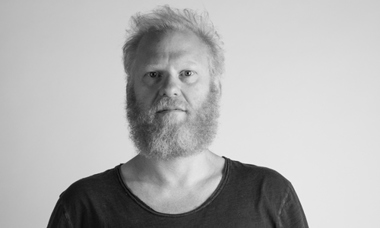
Rohan Wealleans
Read moreRohan Wealleans

Harvest (2021)
Tell us a bit about yourself
Rohan Wealleans was born in 1977 in Invercargill, New Zealand. In 2000 he graduated with a BFA (Painting) from Elam School of Fine Arts, The University of Auckland and in 2003 he gained a MFA (Painting). He was the winner of the 15th Annual Wallace Art Award in 2006 and has exhibited widely in New Zealand and internationally since then, including the 17th Biennale of Sydney in 2010.
How are you inspired in your art practice by the surrounding environment of Taranaki, where you live?
Inspiration can come from anywhere. The side of a building, the bark on a tree. You never know when or what.
What would you like visitors to the exhibition to understand or sense from looking at your artwork?
A sense of time in the work. Also space/scale. Maybe a correlation between the two narratives presented in the work. A sense of enjoyment and wonder is what I would like.
Where do we go to find out more about you?
Instagram: wealleansrohan
How did you get started as an artist?
I went to art school. But always made things.
What advice would you give to a young, aspiring artist?
Work hard and try to be friends with everyone.
What is the most challenging part about working with your chosen media/medium for this artwork?
The demands on the body would be the most challenging part of making this work. Hours and hours of work in strange positions.
What are your tools of choice?
I use a paint brush to put on the paint. Then a scalpel to harvest the surface then tweezers to put harvested bits back on.
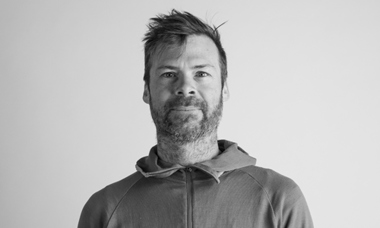
Tim Wigmore
Read moreTim Wigmore

Ono (2023)
Tell us a bit about yourself
I live in Ōmata, but am often bumping around the country for work. I studied craft and design, and use my love of materiality and process to drive my creativity. These explorations often take the form of furniture and useful or semi-useful objects.
How are you inspired in your art practice by the surrounding environment of Taranaki, where you live?
Earth shapes this work. The cabinet holds 4 stones, the first box, made from tawa, holds artist Karaitiana Akroyd's carvings of Pai-Are and Pai-Tawa, the 2 sacred boundary stones of the Huatoki. Pai-Tawa was partially dynamited in 1934 to improve stream flow; Pai-Are is under the Mill building foundation. The second (rimu) box's stone represents St Mary's church. Built from local andesite stone, it is the oldest stone church in NZ. The 3rd stone in the pine box is a finger (breakwater) from Te Kupenga on the side of Paritutu. The shoulder of Paritutu was blasted for rock to use for the breakwater and port, however the stone was ultimately found unsuitable for this purpose.
The upper box, made from tōtara, references the weaving motif found in the facades of Puke Ariki, as well as Te Whare Hononga. For me, it represents a kind of utopian unity that might be attained as we address the wounds of the past.
The action of the cabinet alludes to the levelling of the land, the colonisers’ efforts to flatten or reduce Puke Ariki, Pūkākā and Paritutu. The base of the work represents Len Lye's Wind Wand base (which I believe represents a sugar loaf). It is fabricated from one of the basalt bollards and copper lamp posts from New Plymouth's CBD.
Where do we go to find out more about you?

Yumi
Read moreYumi

Te Ao Tūroa (2023)
Tell us a bit about yourself
I’m Japanese but have been overseas for nearly 25 years.
I am a full-time piano tutor who is working in North Taranaki.
Raranga (Māori weaving) was taught by Kim Kahu, Trina Taurua and now I’m studying Maunga Kura Toi - Bachelor of Māori art Raranga - in the second year by Trace Robens with Te Wānanga o Aotearoa.
How are you inspired in your art practice by the surrounding environment of Taranaki, where you live?
I was living in Germany for nearly 10 years before I came to Taranaki. When I came here, I felt it was my home, even though I was enjoying European culture. New Zealand has a similar land shape like Japan. Taranaki mountain looks like Fuji-san which is the highest mountain in Japan. Here we can live quite close to nature which I love. I also like music, just like nature. Those 2 things I want to reflect on in my mahi.
What would you like visitors to the exhibition to understand or sense from looking at your artwork?
Raranga is my meditation, therapy, and my passion. It contributes to a sustainable life as well. I would like to let more people know about Raranga which you can learn at Te Wānanga o Aotearoa.
Where do we go to find out more about you?
My raranga journey (including process of this artwork) is my Instagram,
Was this page useful?
Thank you.
